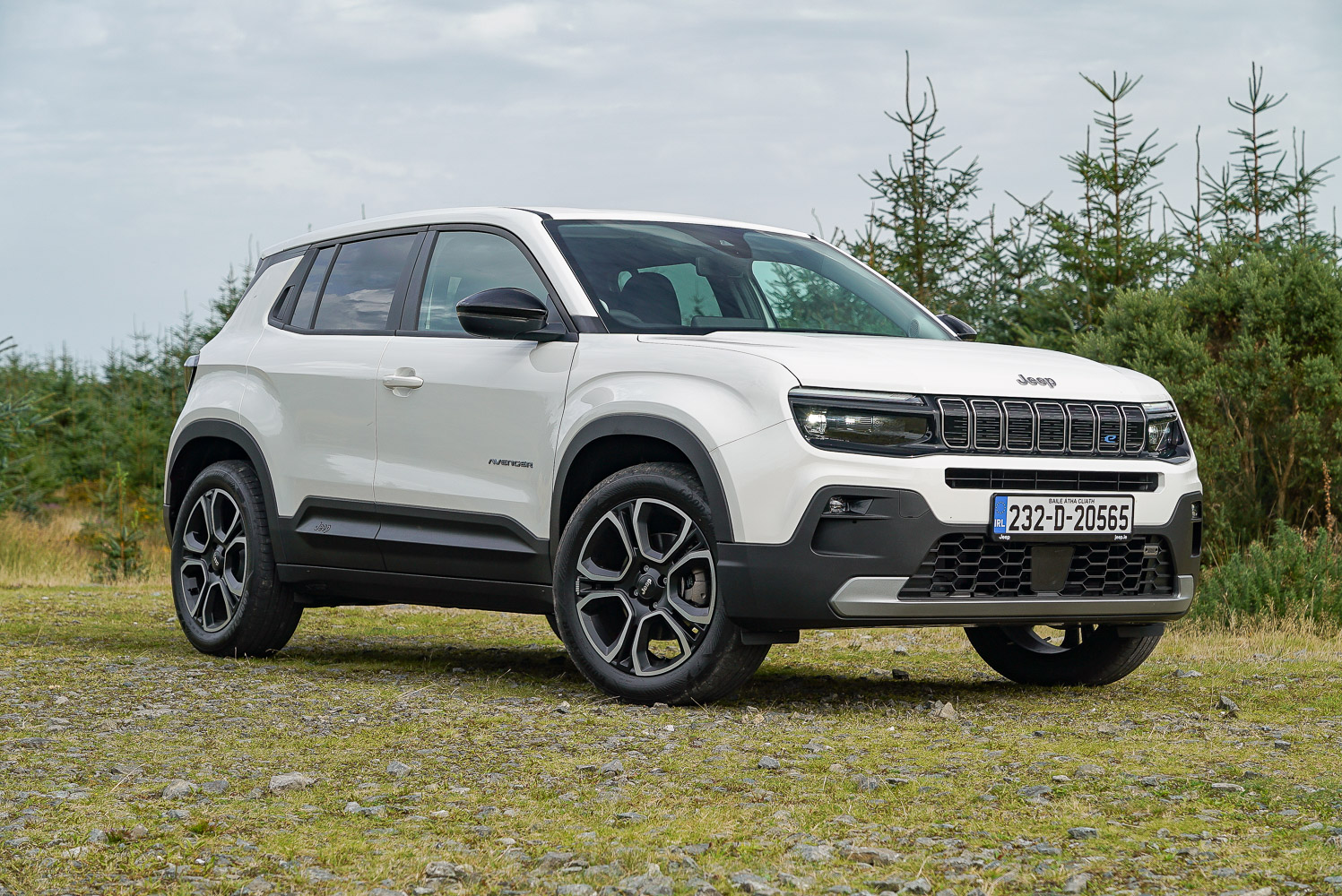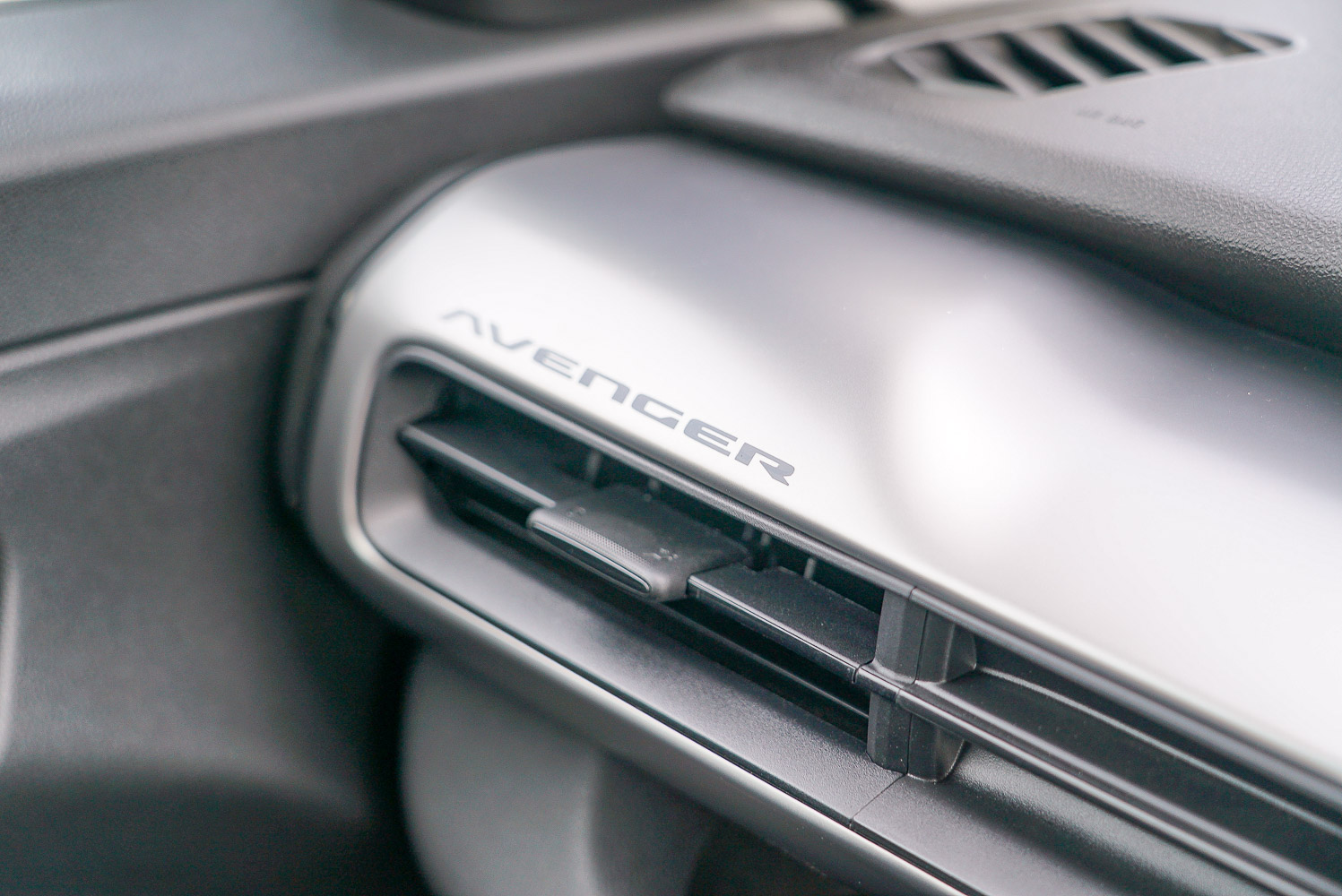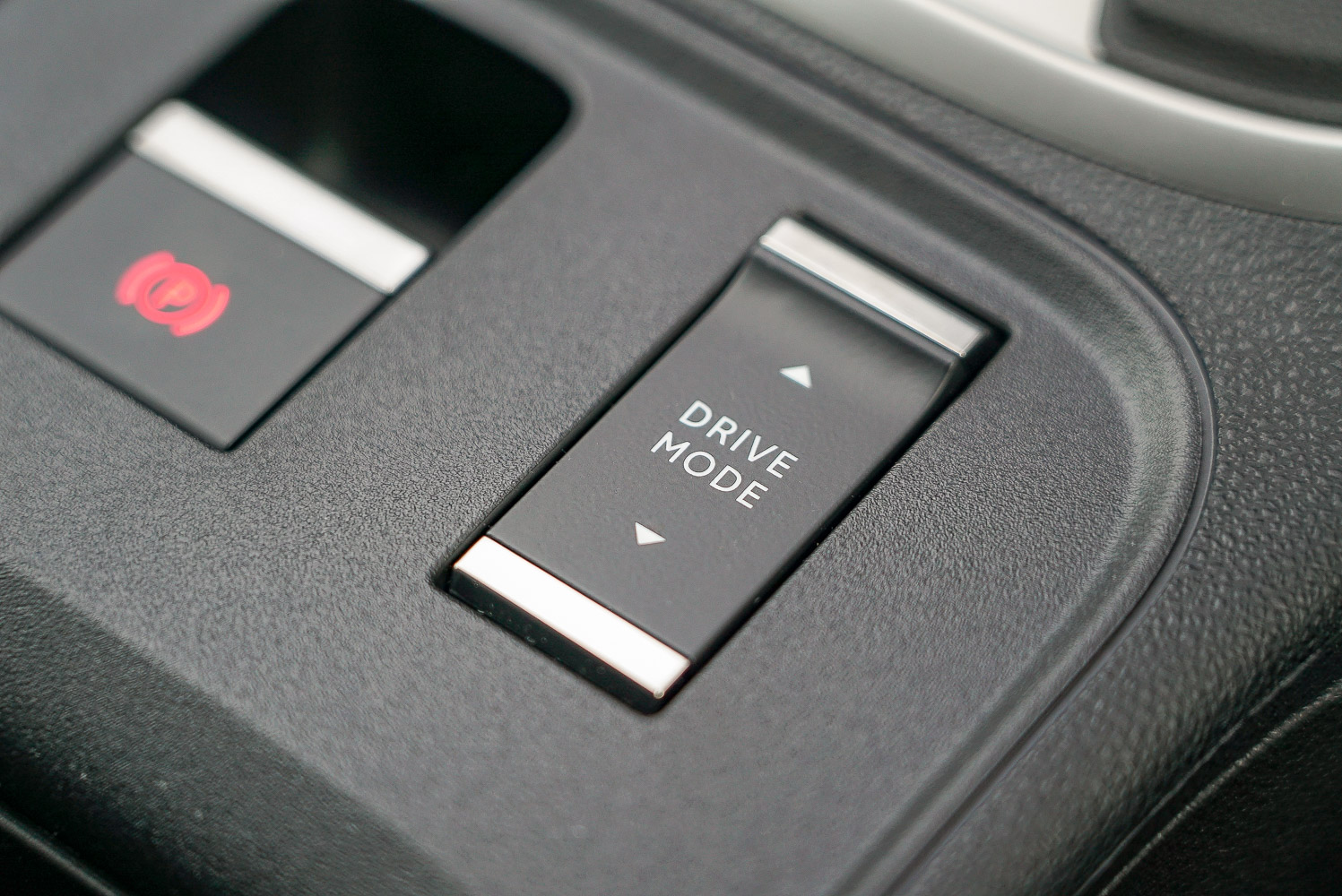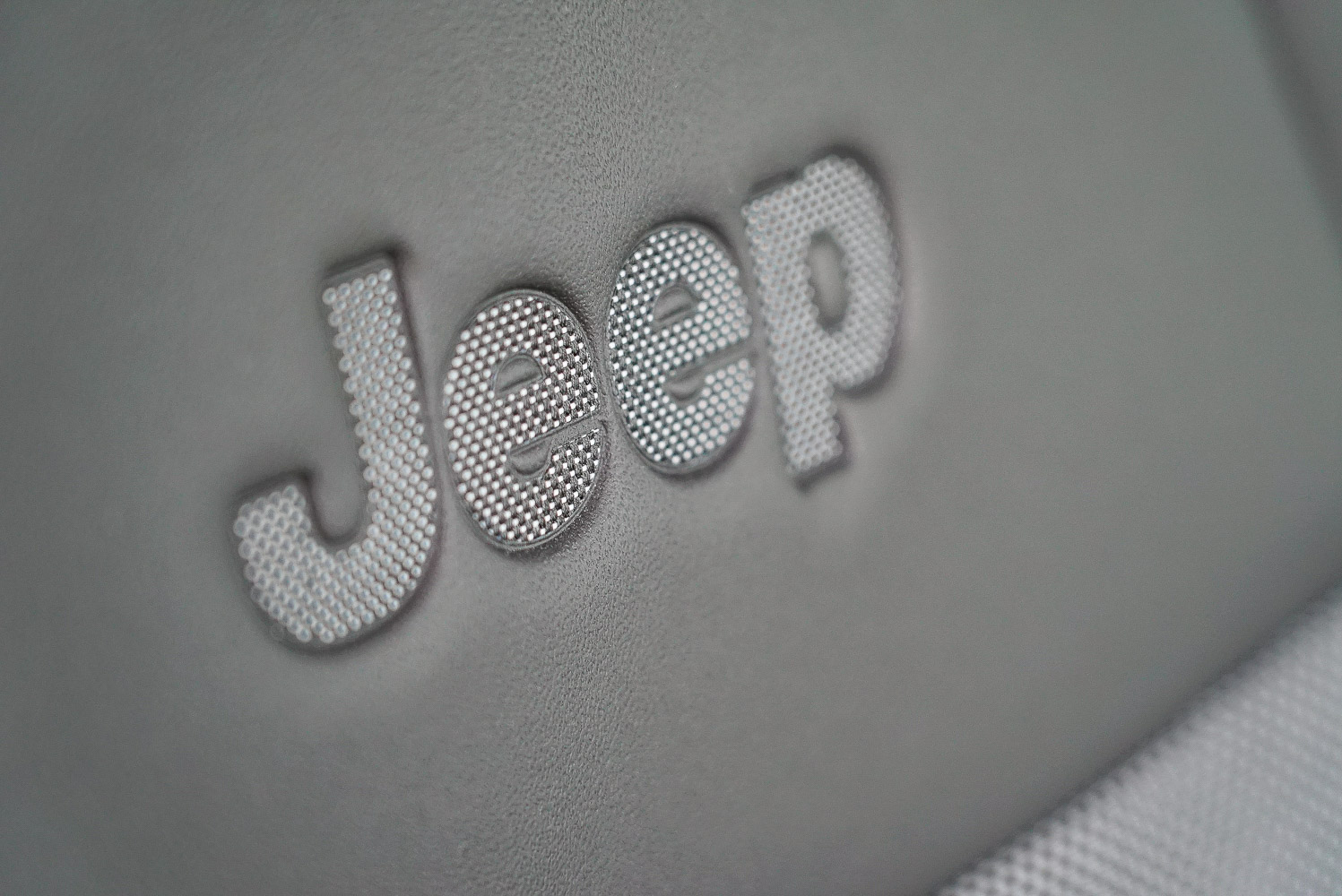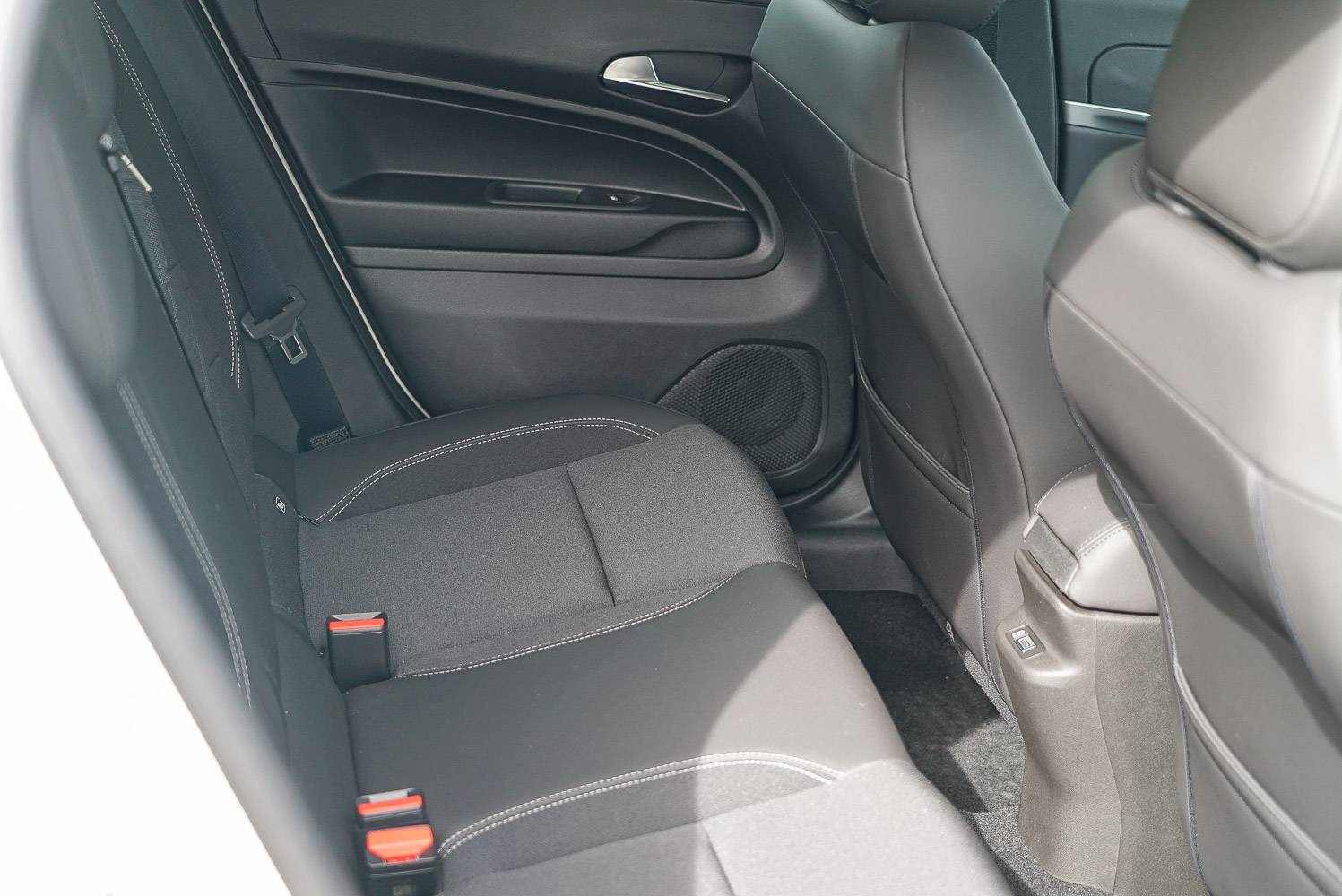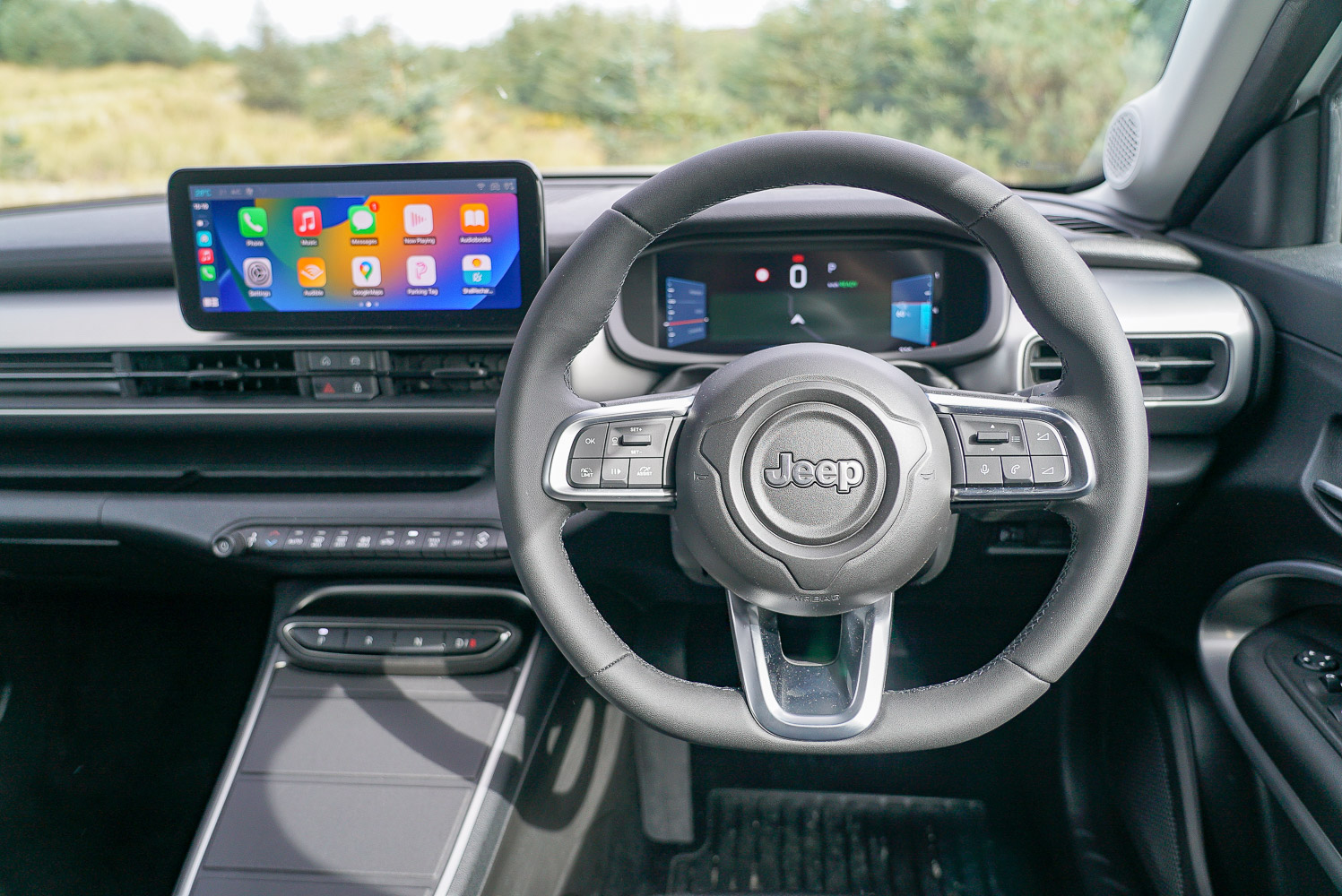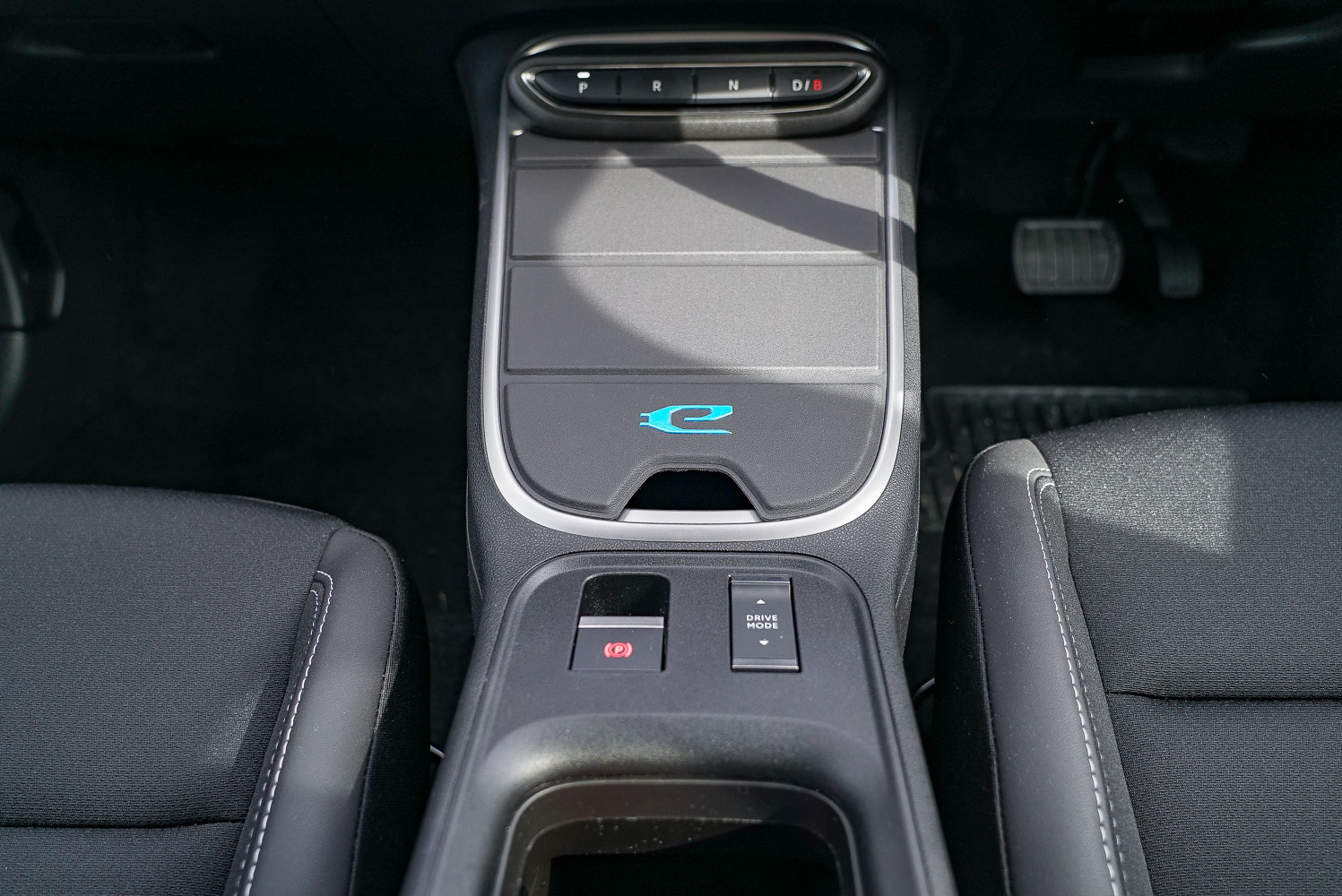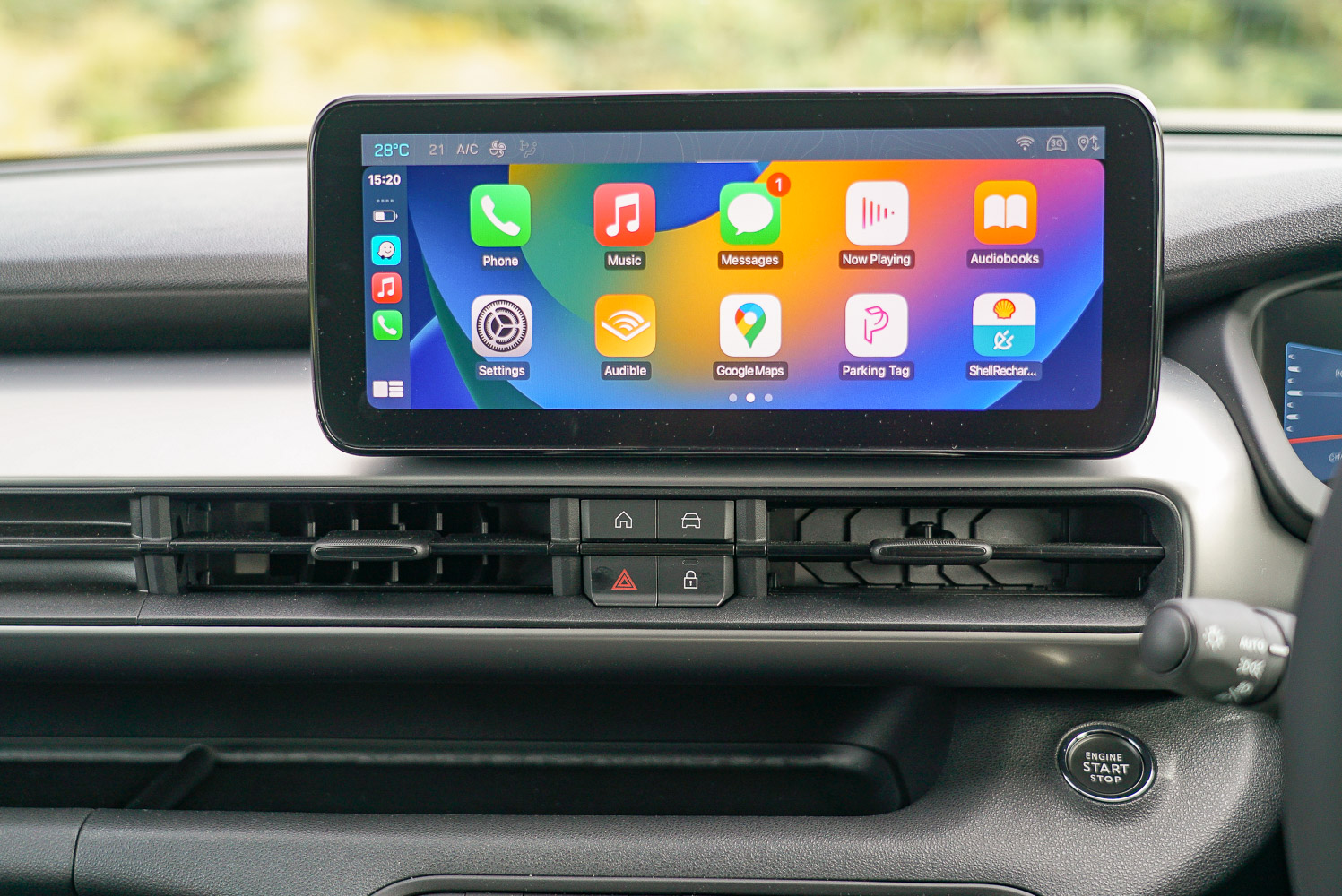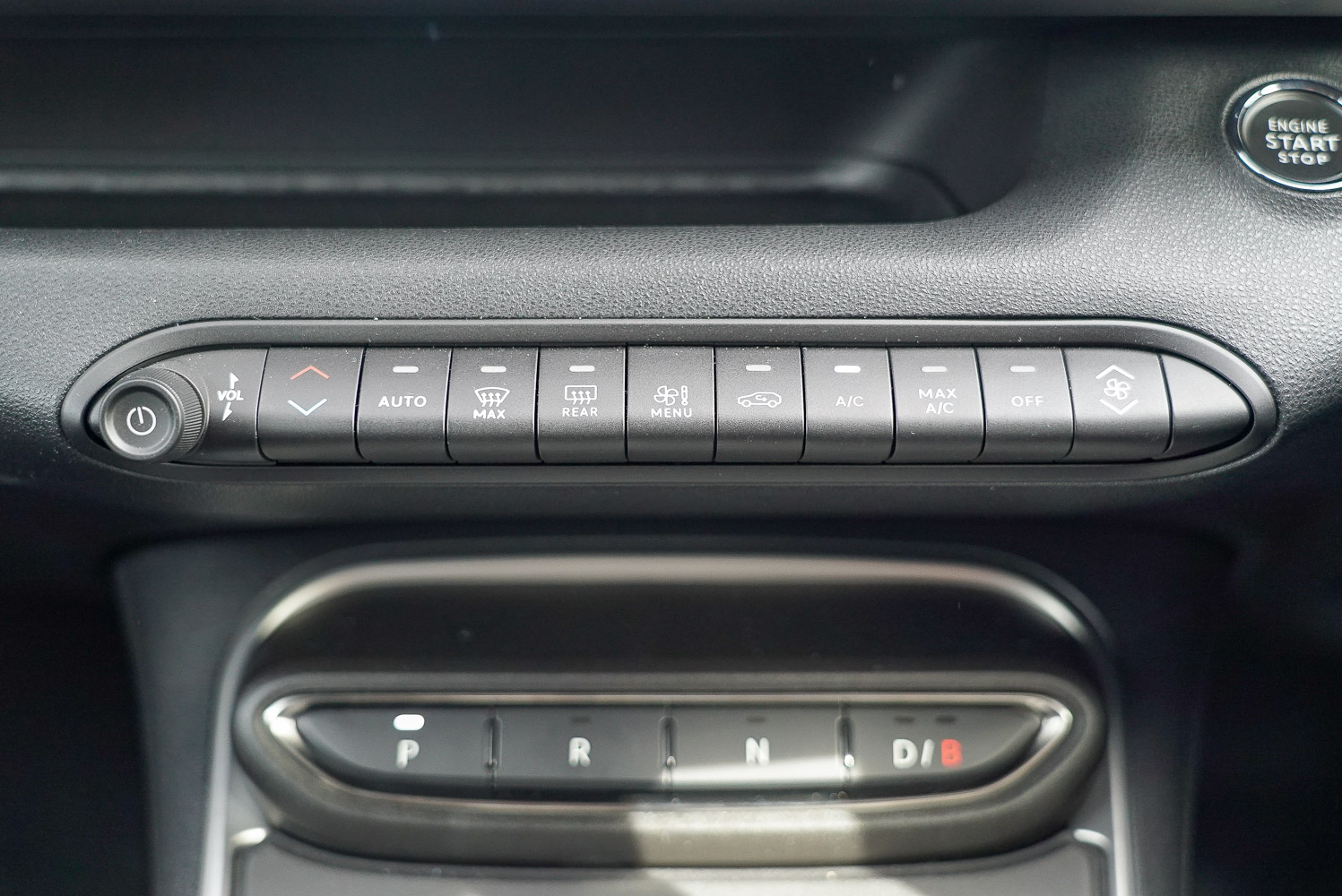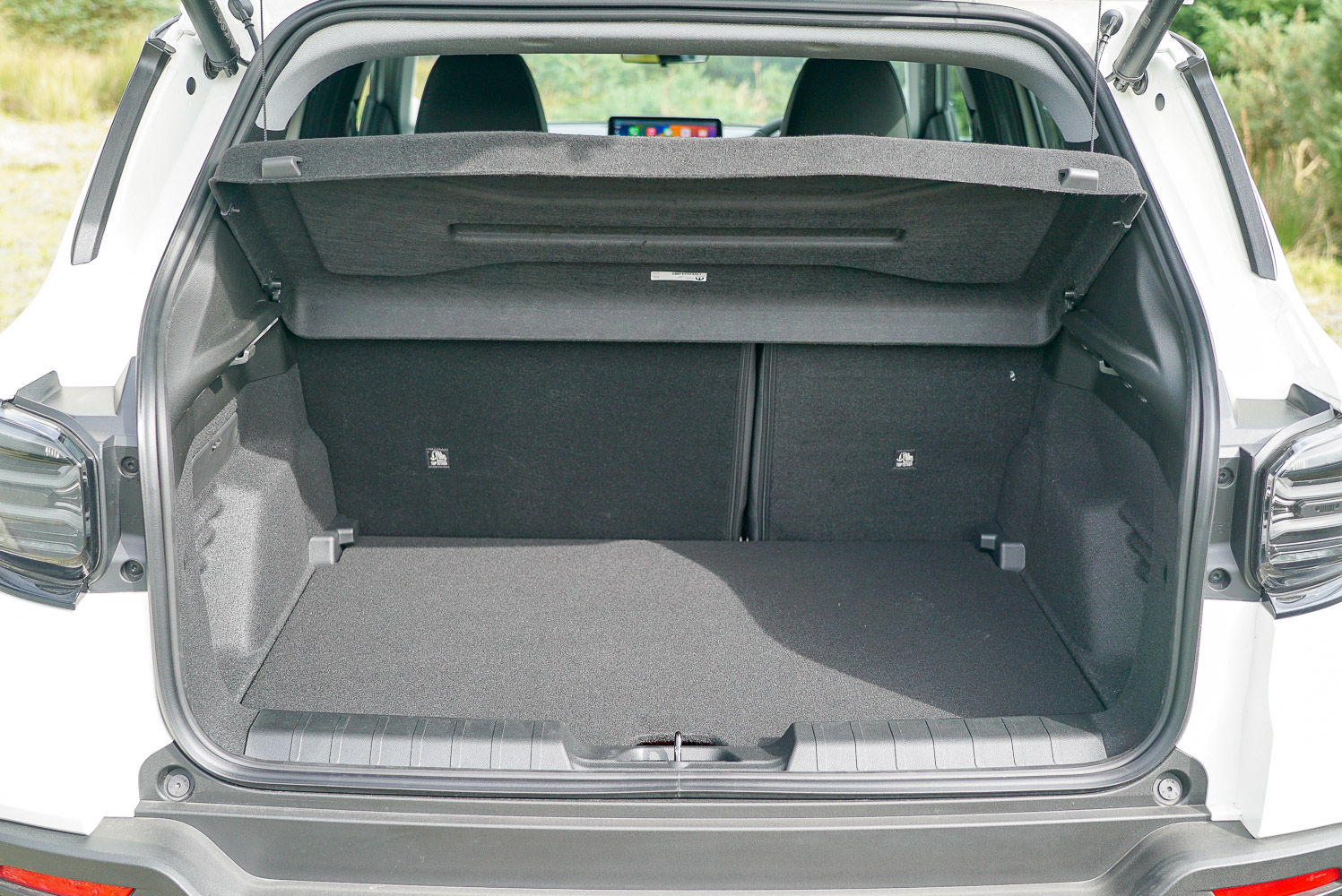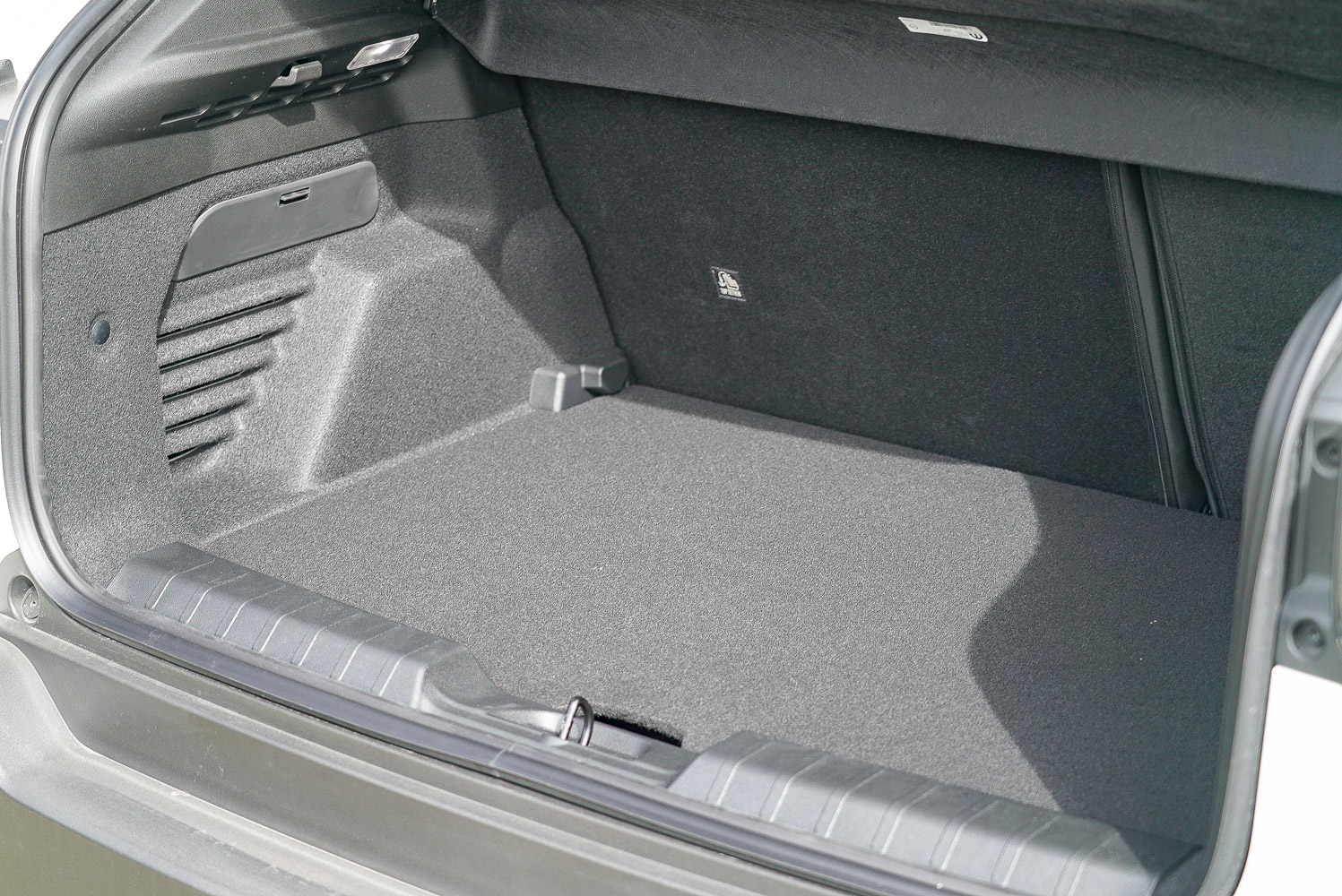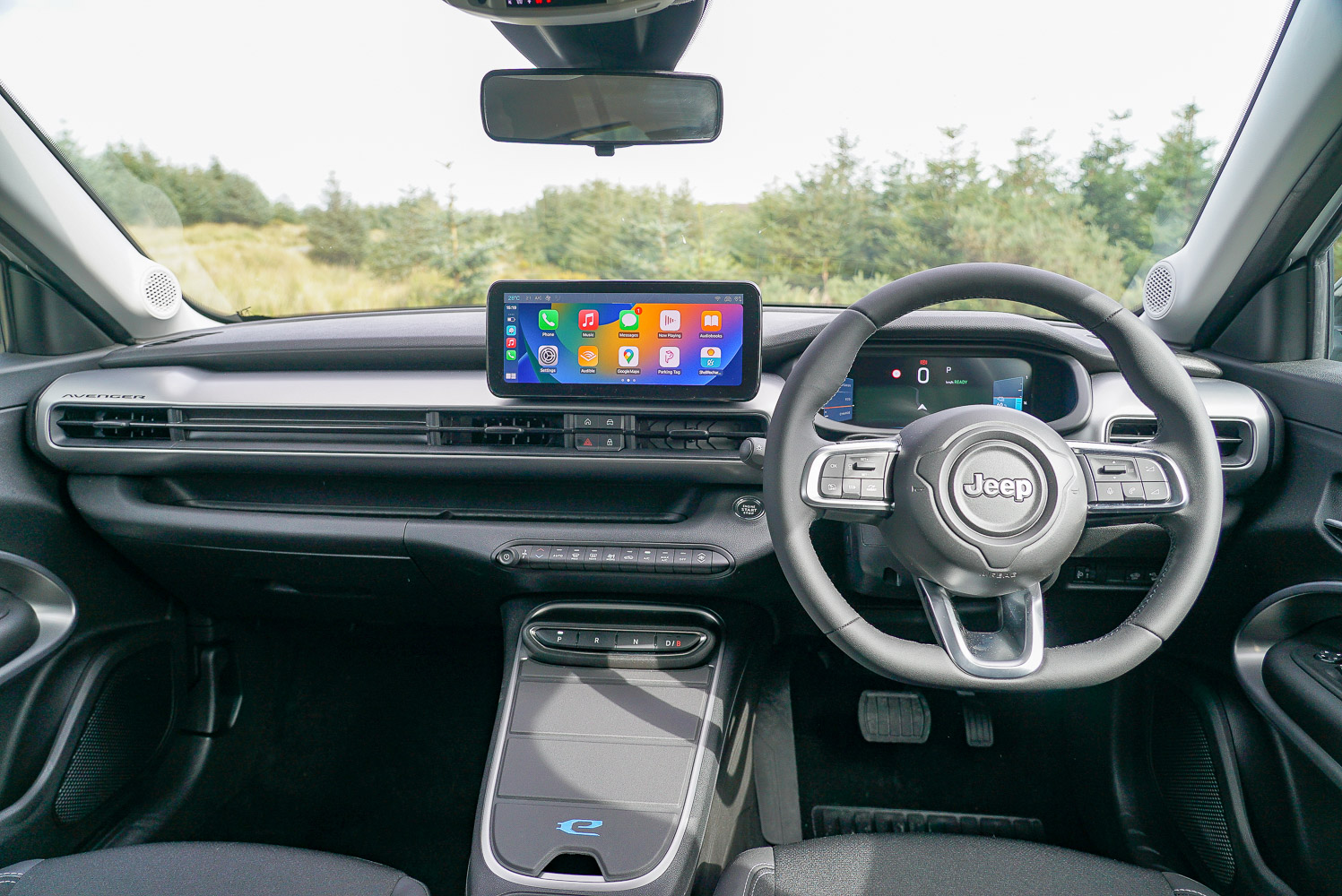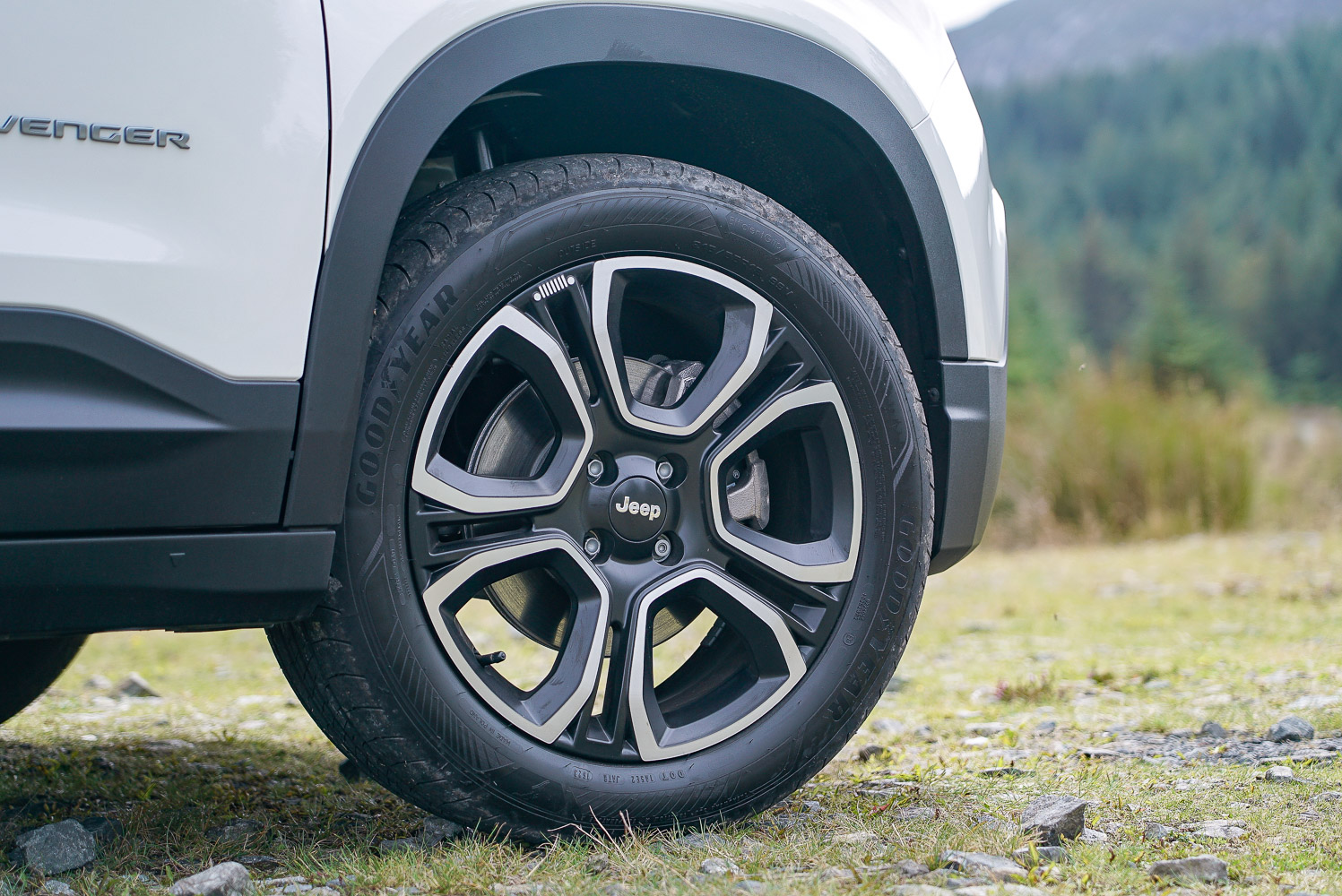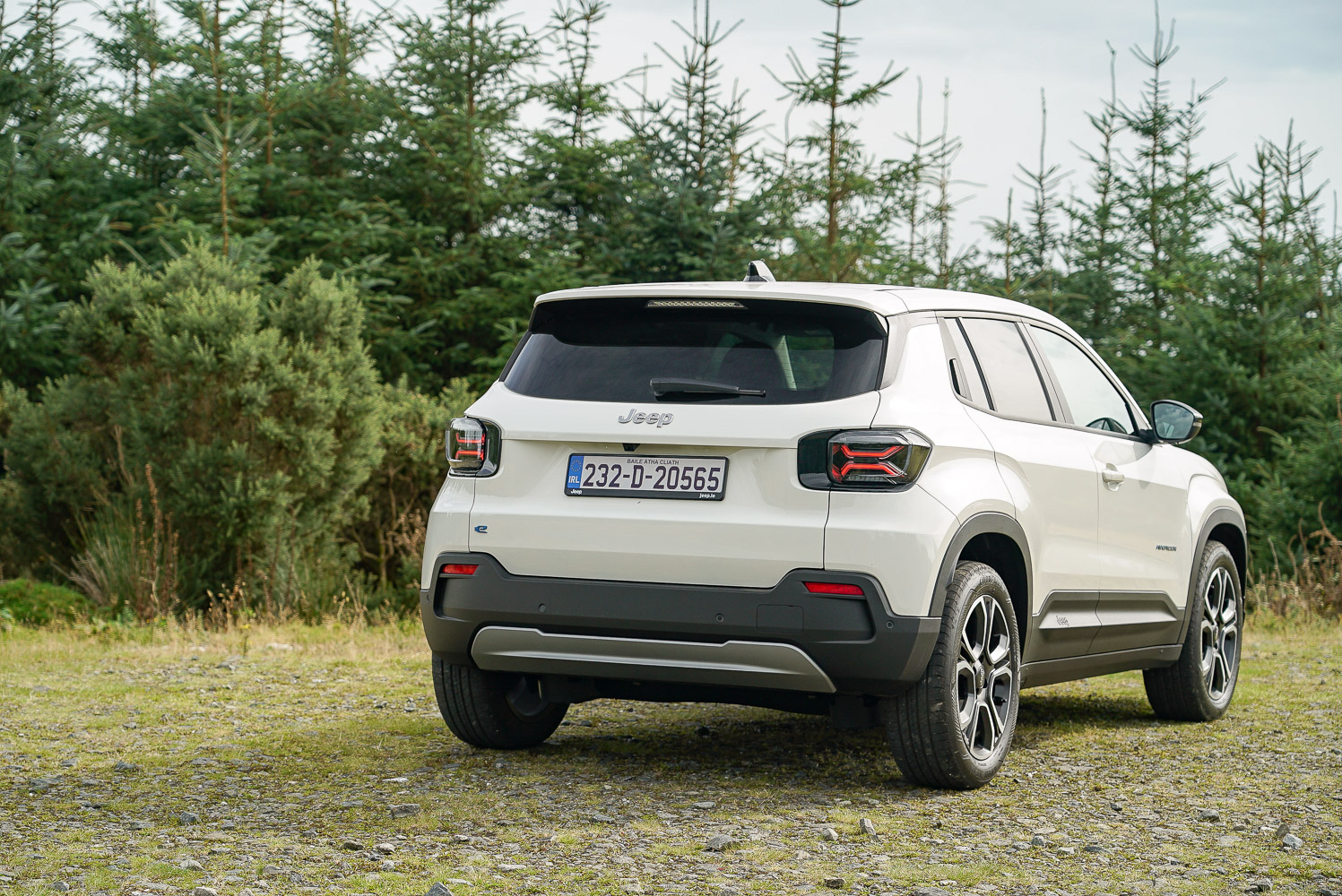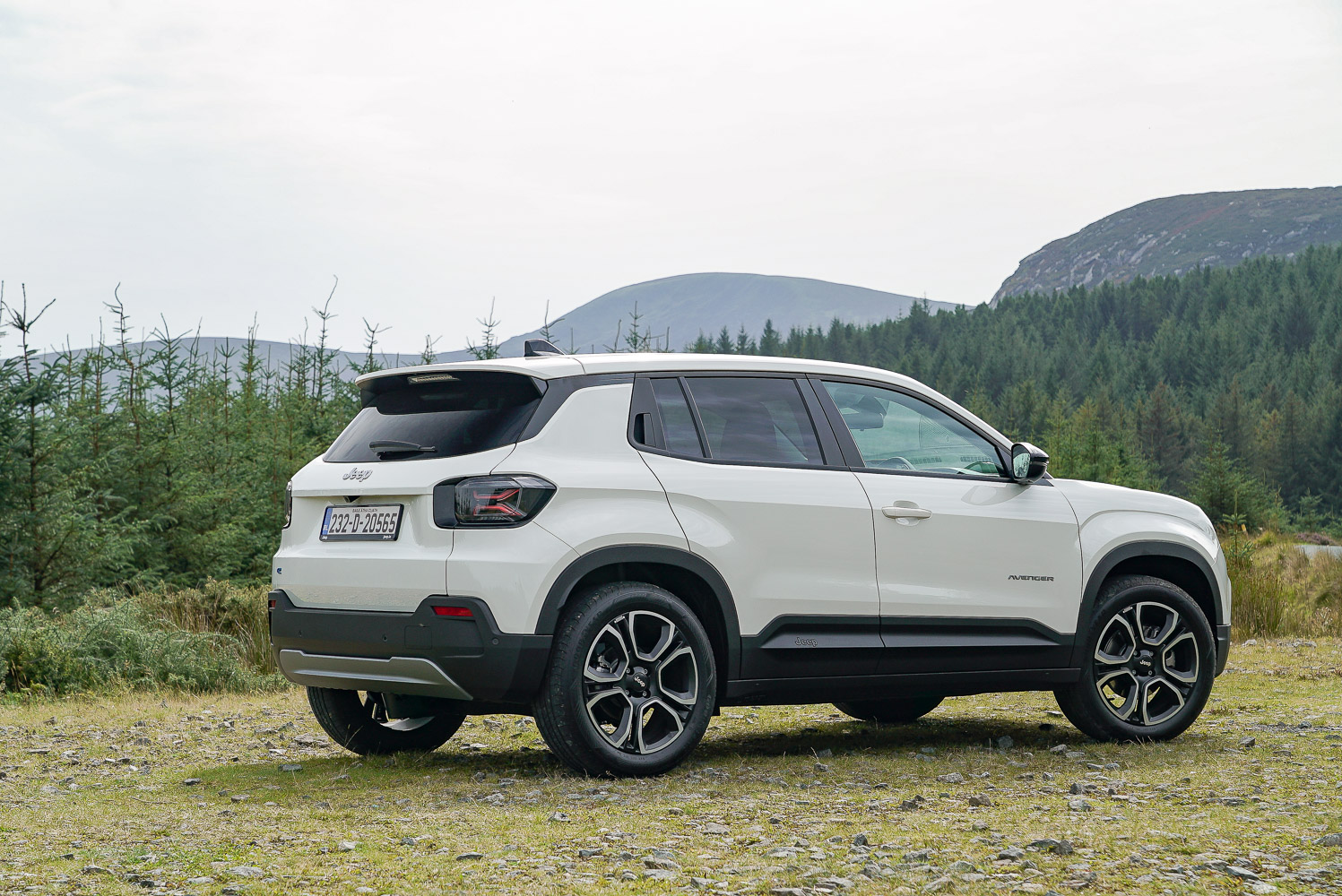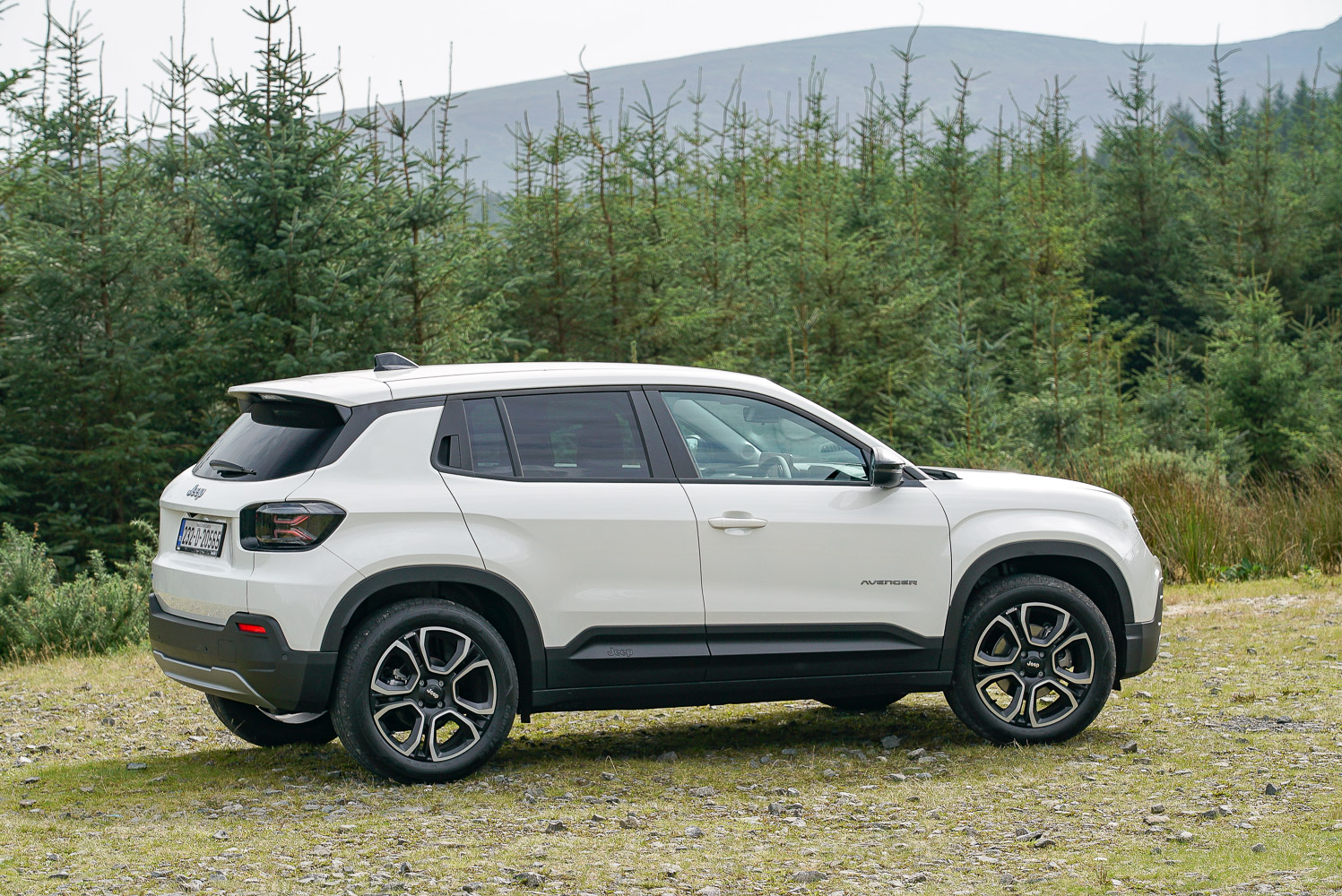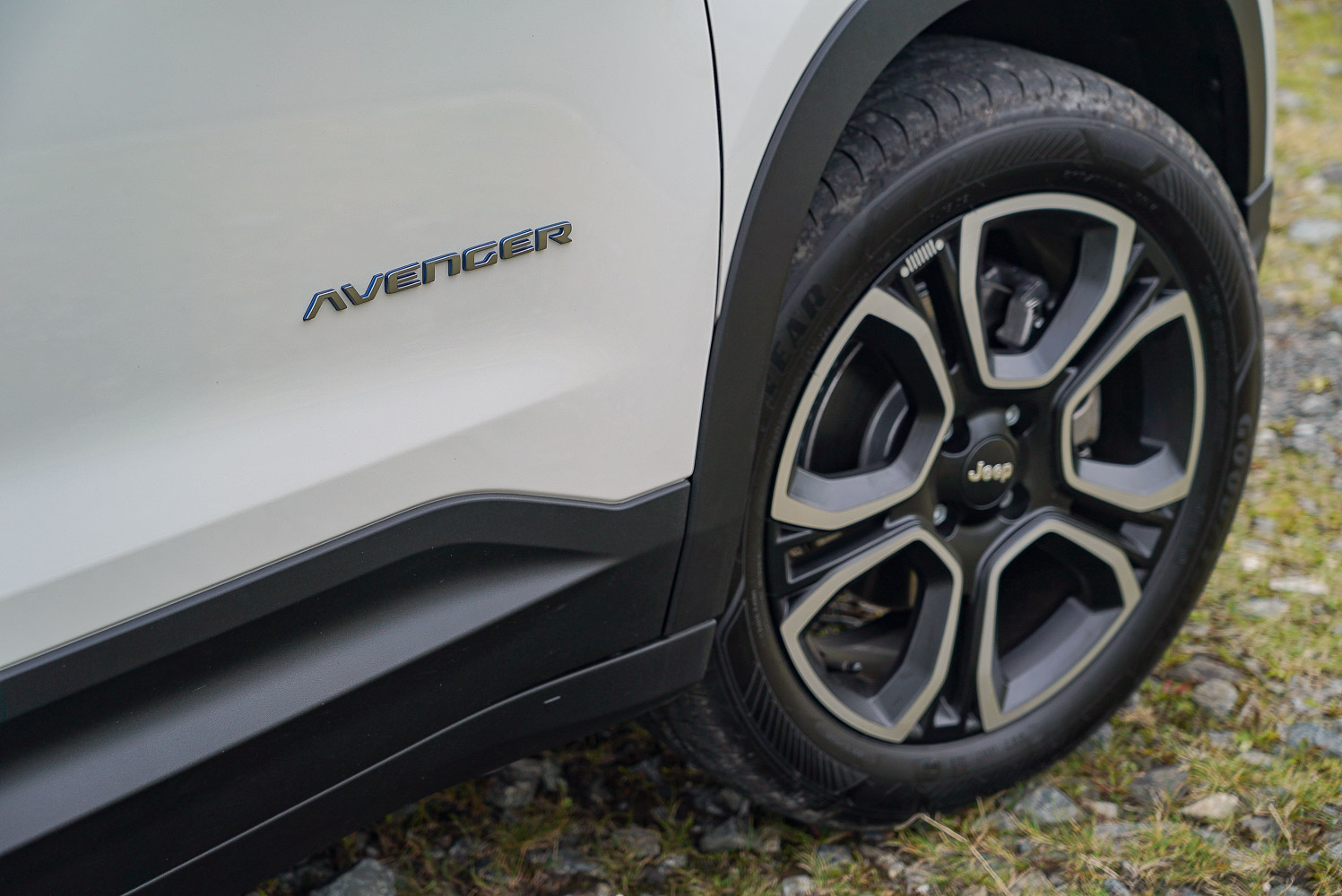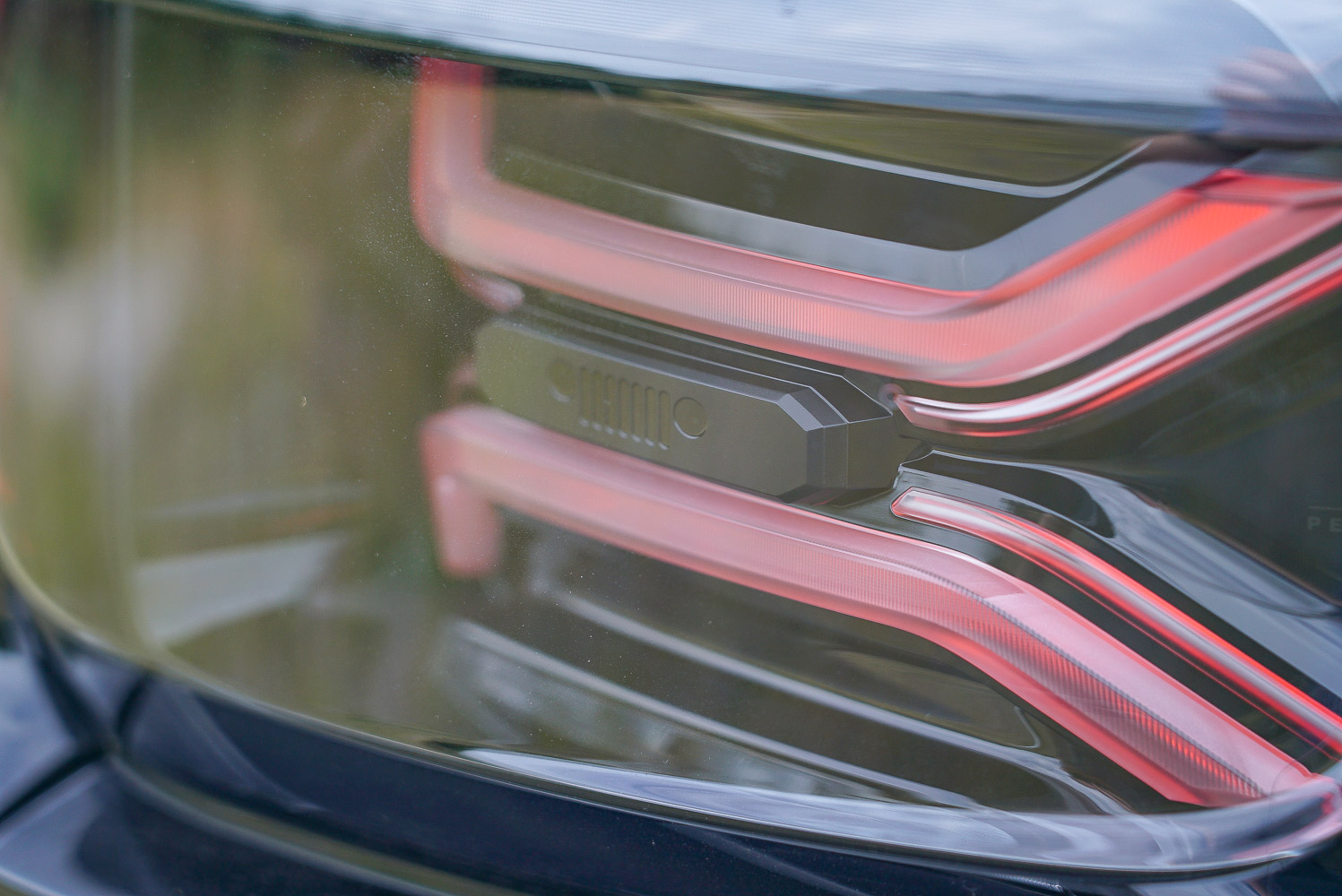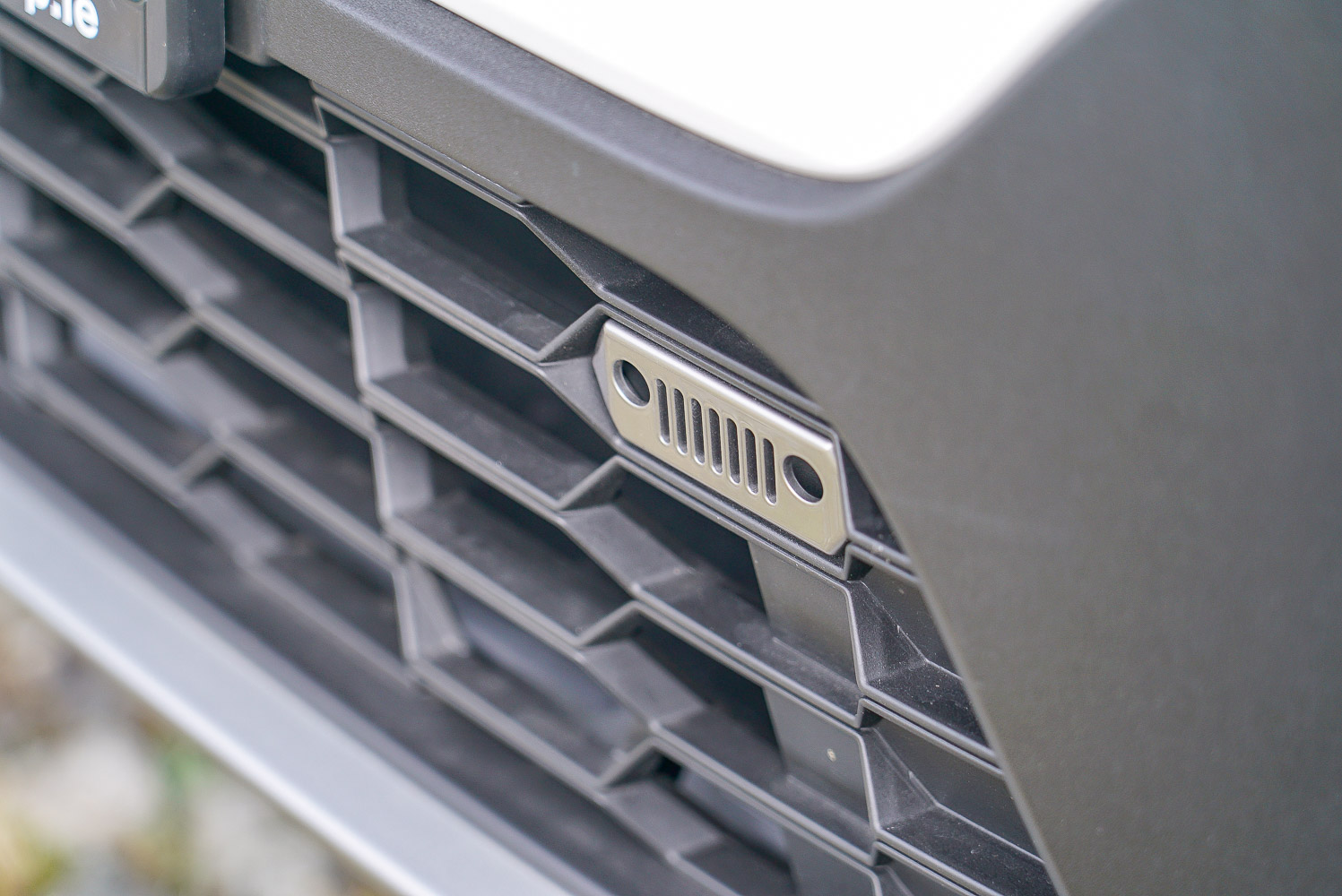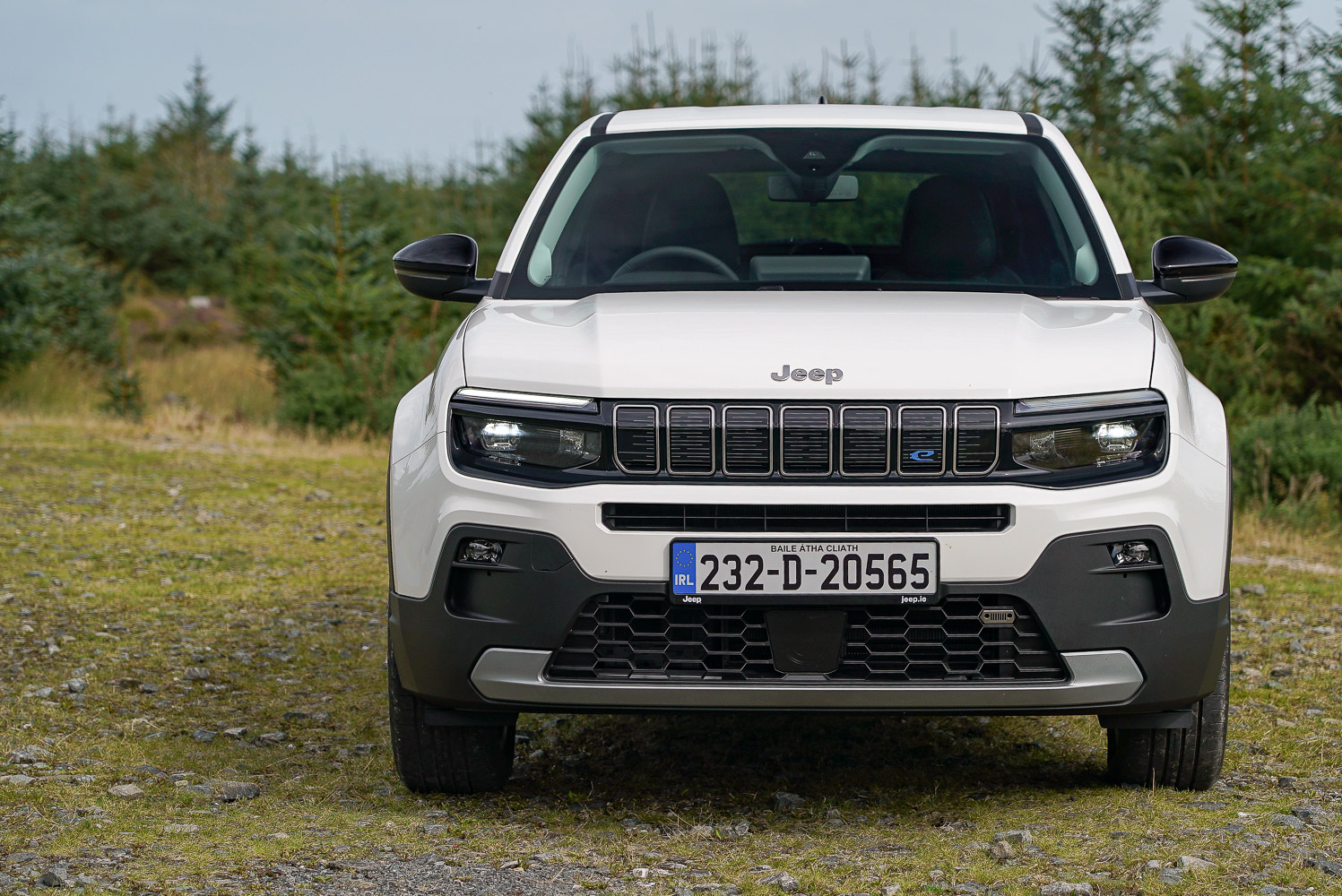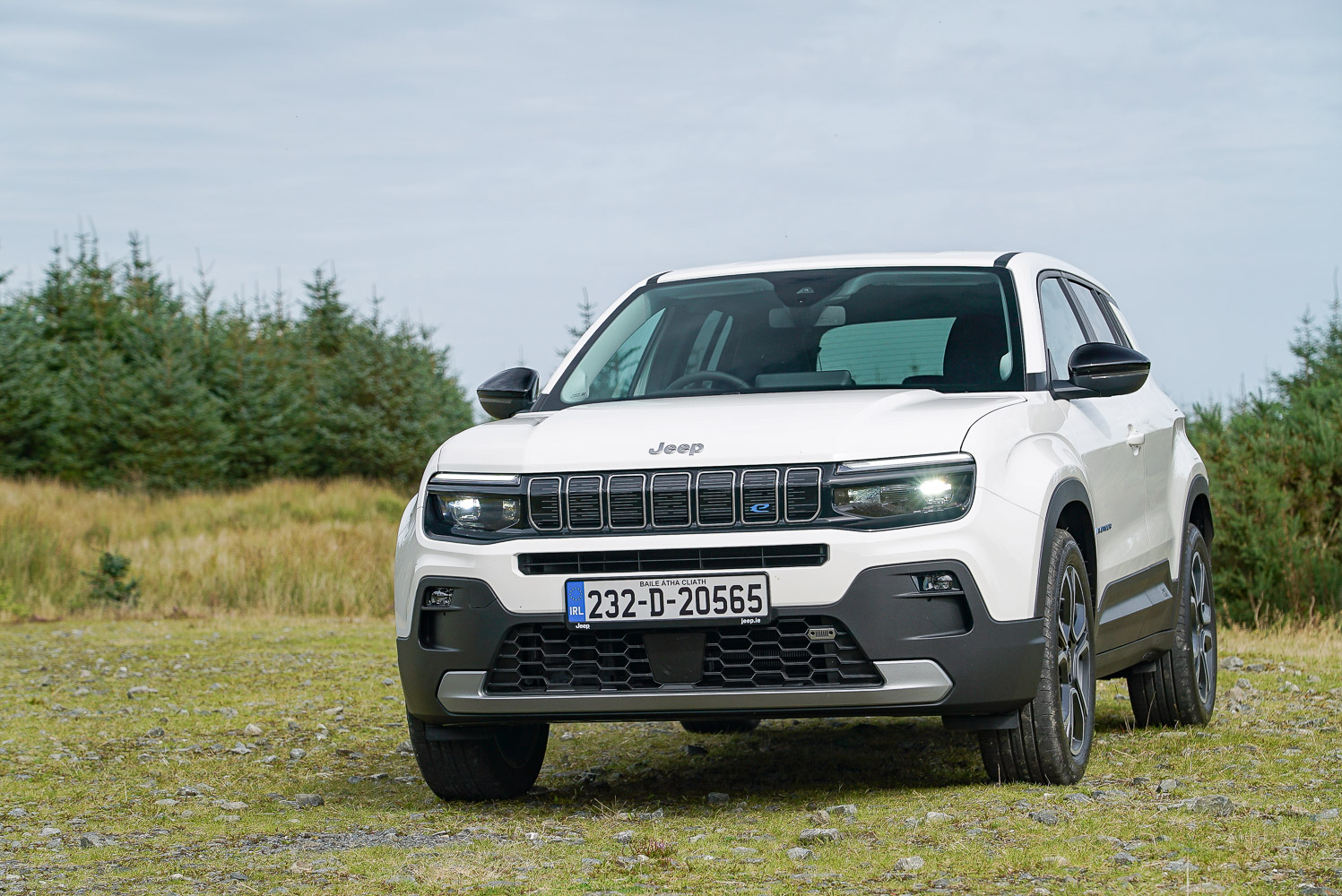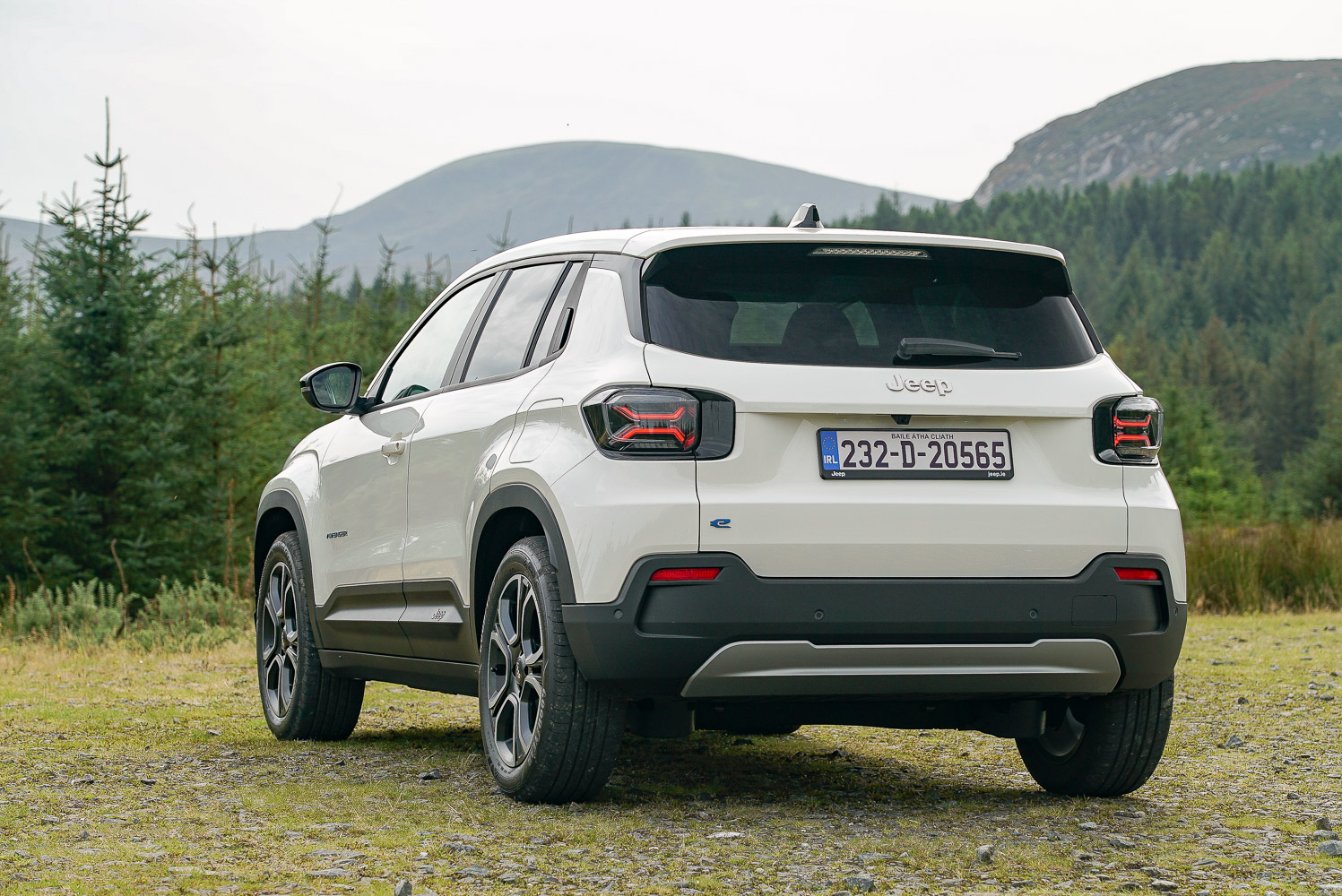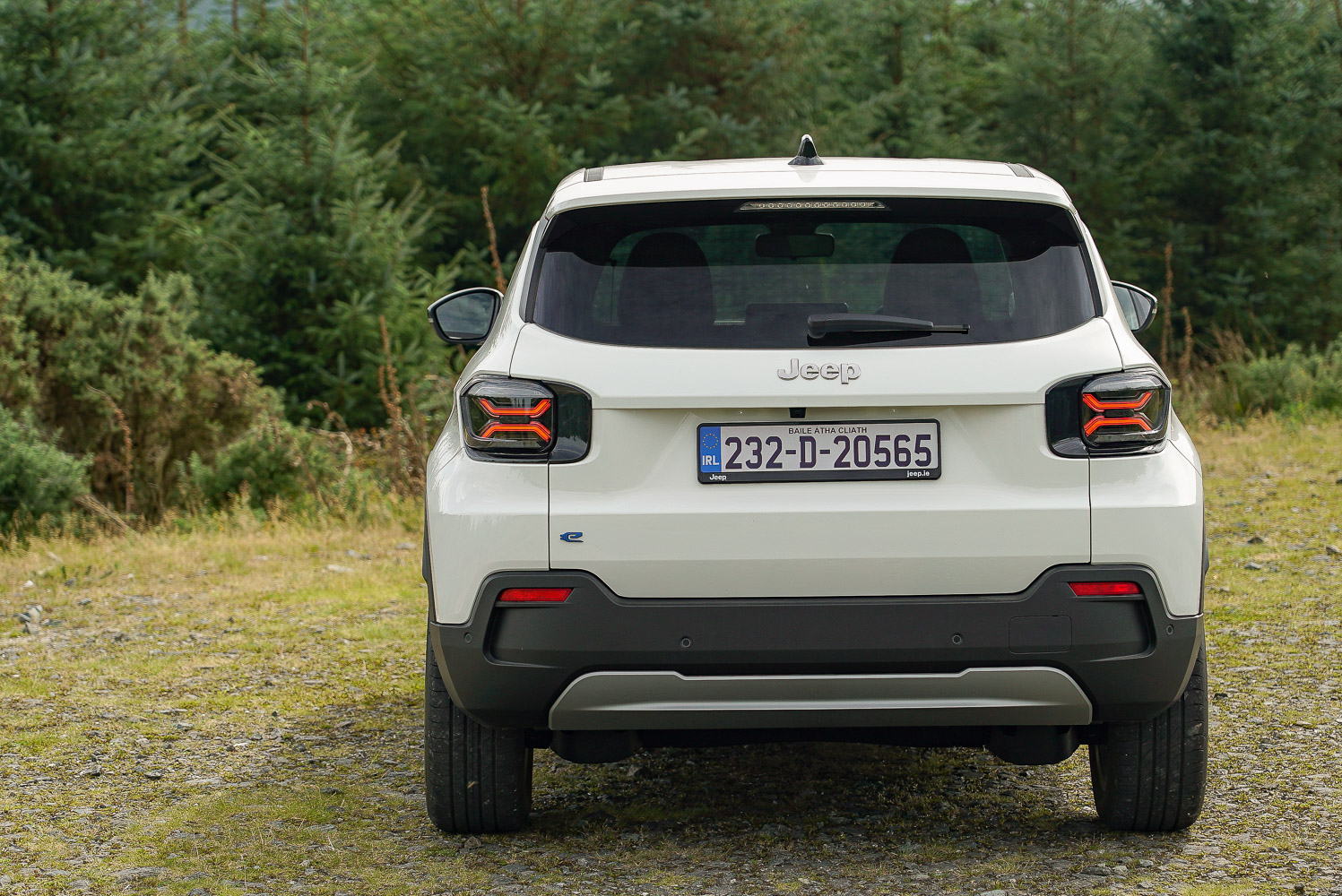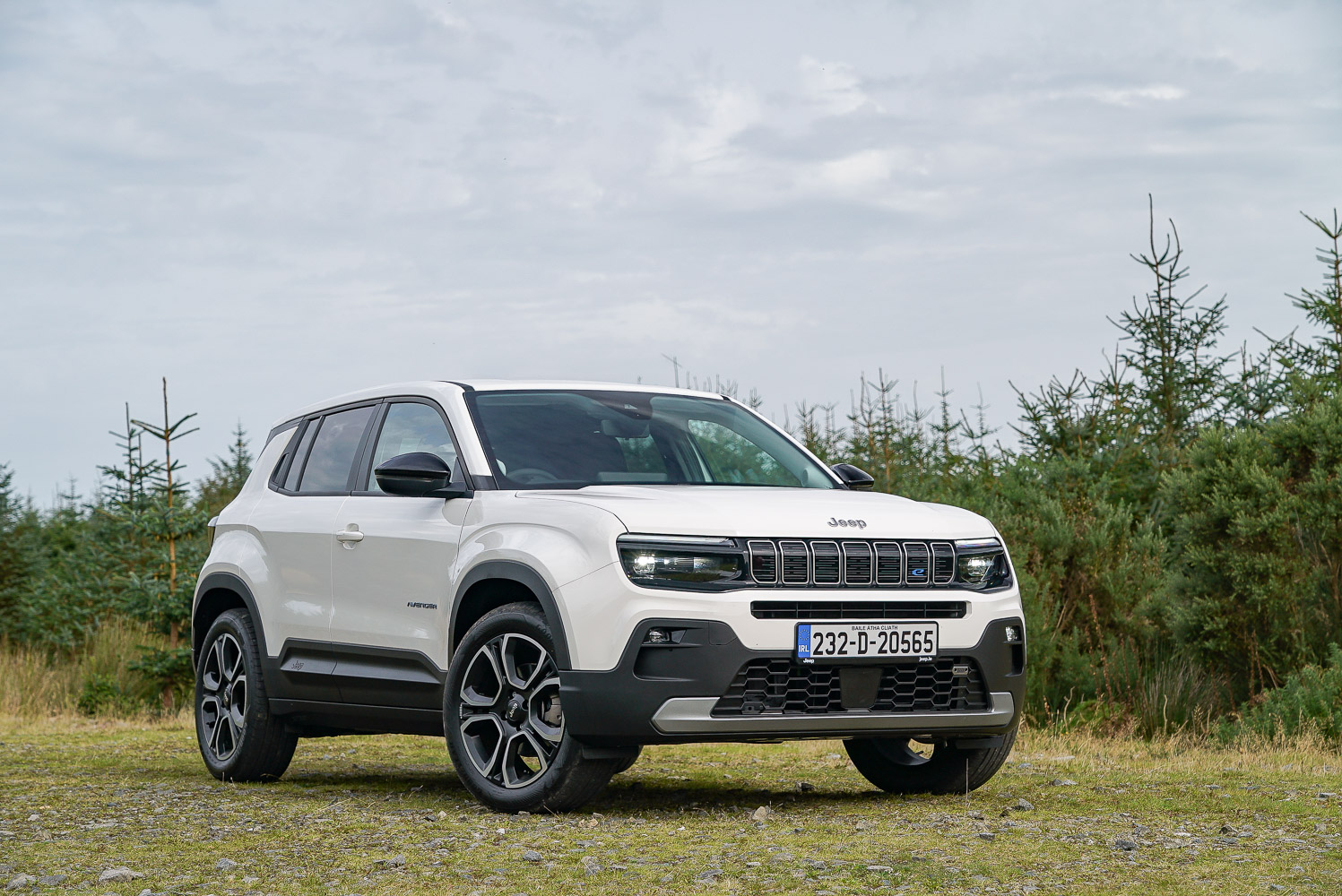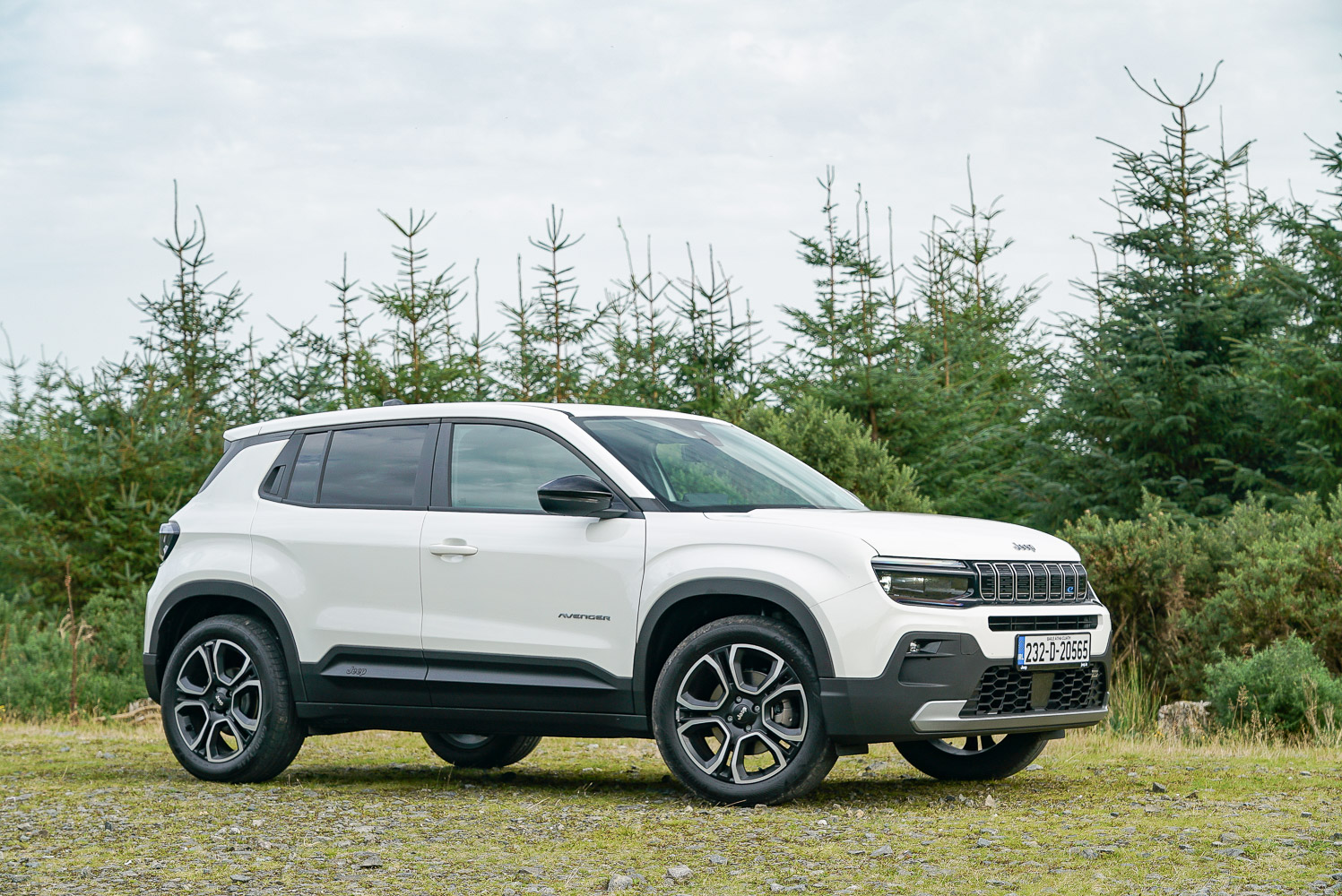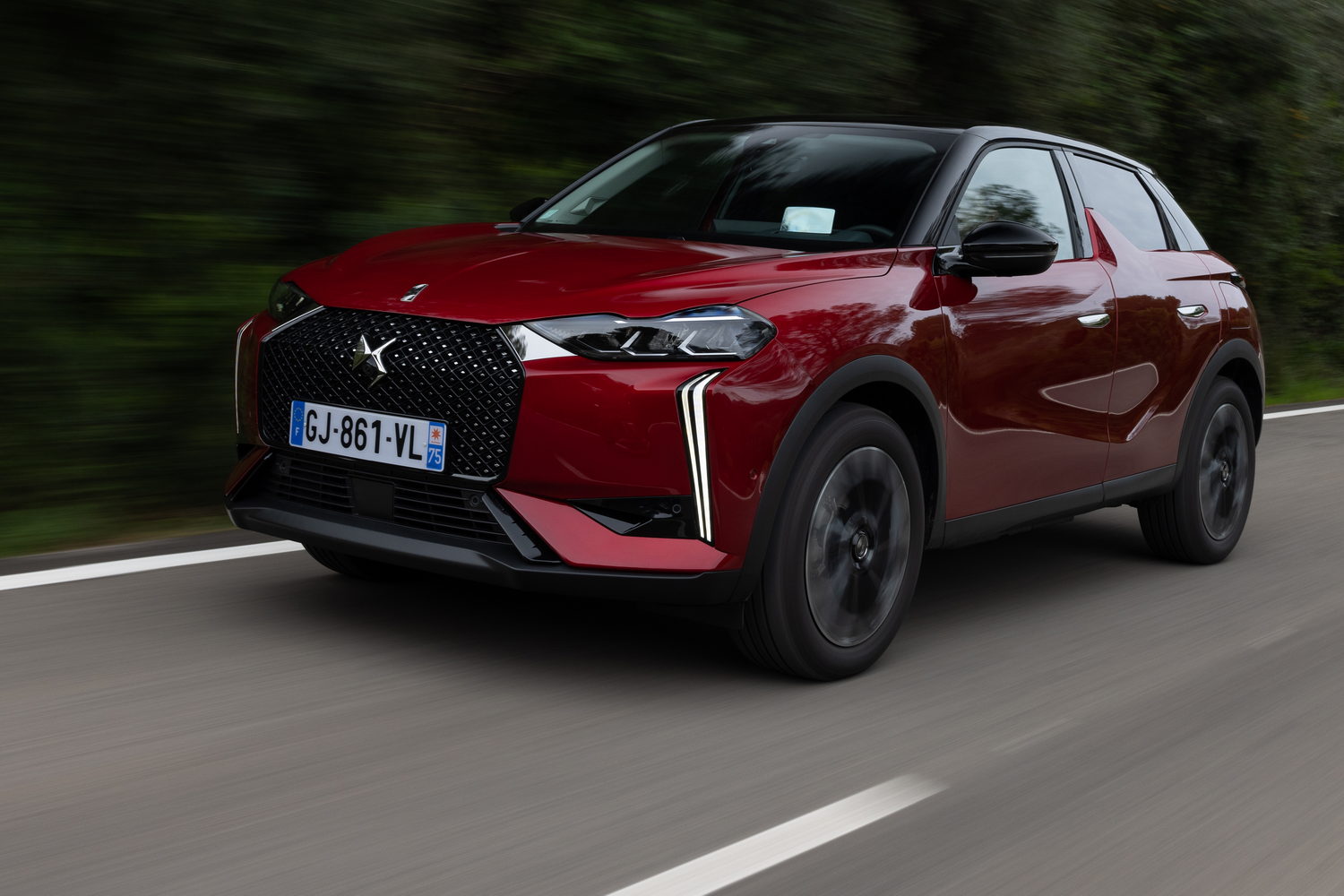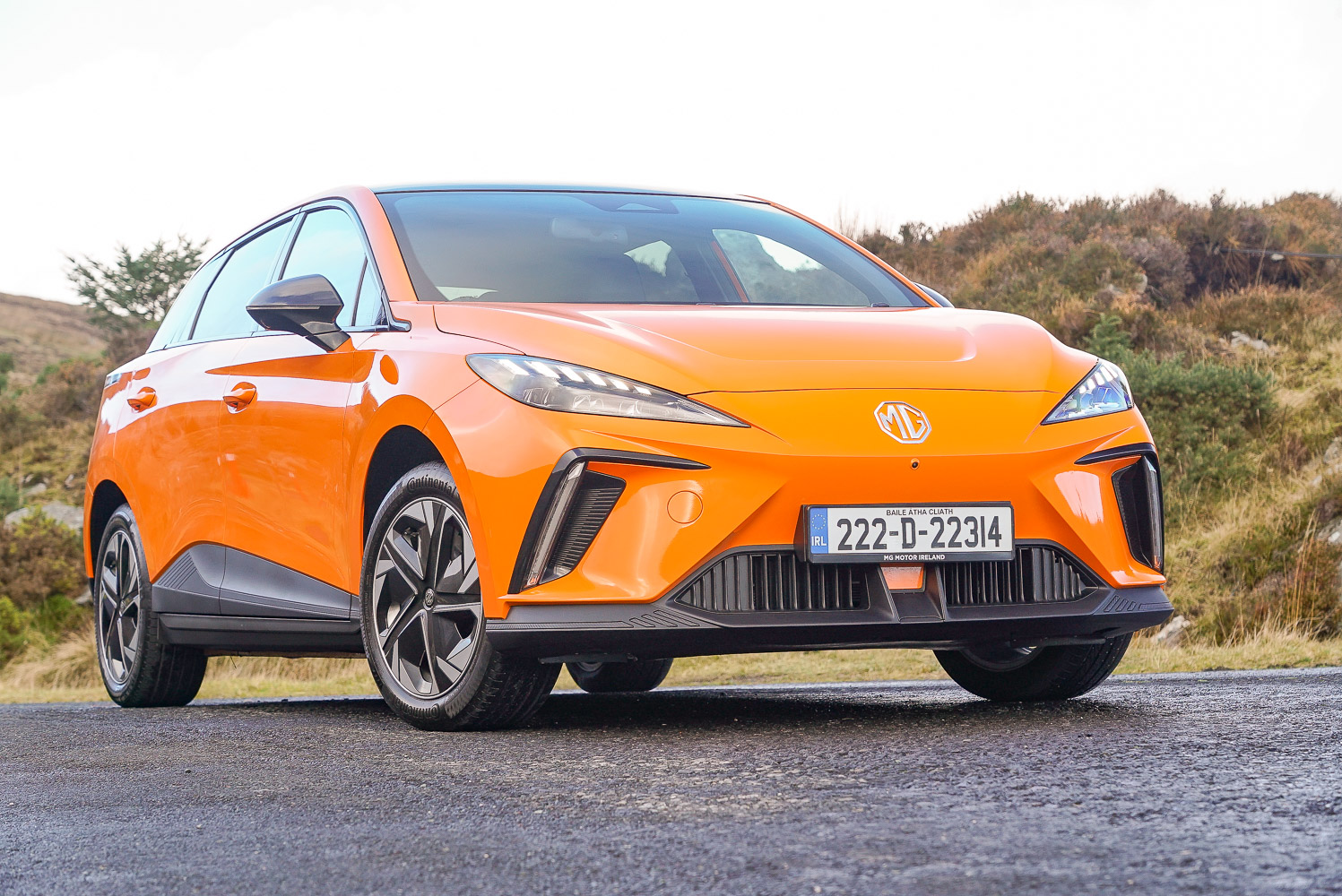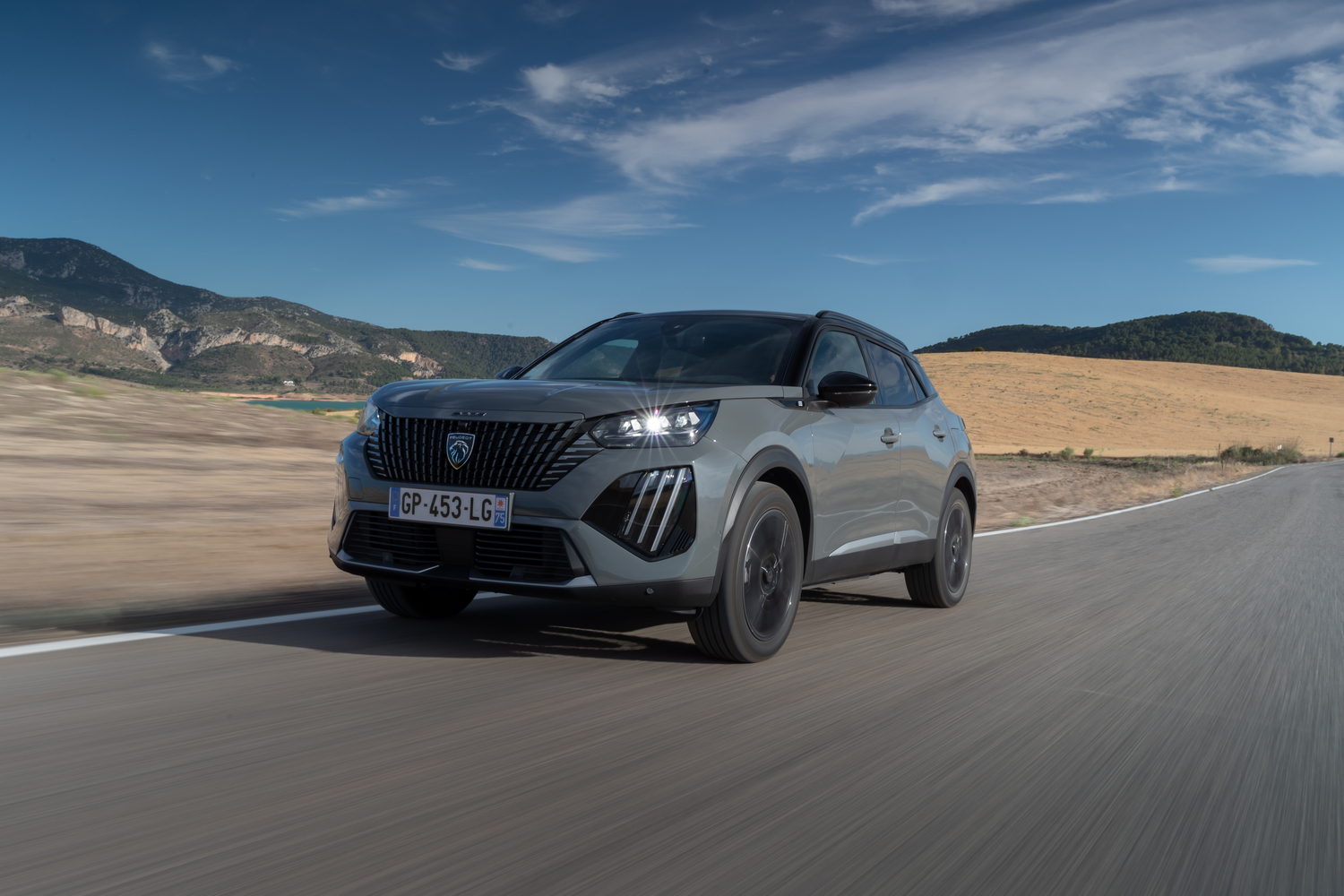Jeep Avenger overview
It's no understatement to say that the Jeep Avenger is a pivotal car for the US firm. It is Jeep's first all-electric model, and it's the smallest car in the line-up, too. In fact, it's a Europe-only model having been designed and developed in Italy - and Jeep has no intention of selling it in the States.
Another first is the use of a Stellantis-sourced platform (until now all Jeeps used running gear from the Fiat-Chrysler group of brands) and the running gear under the chunky body is shared with the likes of the Peugeot E-2008, Opel Mokka and new Fiat 600e.
While those cars could be considered rivals to the Avenger, the reality is that the Jeep is smaller than two of them, measuring some 300mm shorter than the 2008. However, Jeep has made the Avenger its own car, with the company's familiar styling cues - seven-bar grille, chunky wheelarches and X-shaped taillights - all present and correct.
While it's not quite as big as the E-2008 and Mokka, prices are similar, and the Avenger will also rival the DS 3 E-Tense which shares the same underpinnings. Other rivals in the small electric crossover class include the Mazda MX-30, Hyundai Kona, Kia Niro and forthcoming Volvo EX30.
The Avenger is the first in a wave of new electric models that are on the way from Jeep. Not only will a four-wheel-drive Avenger 4xe join the line-up next year, but we'll also see the debut of the all-electric Wagoneer SUV and Recon electric 4x4, with more new models in the pipeline for 2025 and beyond.
The Jeep Avenger model range
The Jeep Avenger starts from €35,995 (including the SEAI grant and VRT relief), and this gets you behind the wheel of the entry-level Longitude model. We say entry level, but it's still a very well-equipped machine. It comes with 16-inch alloy wheels, heated door mirrors, LED headlights, a heat pump, All-Terrain drive modes, keyless starting, climate control, connected services, hill descent control, auto lights and wipers, rear parking sensors, emergency braking with pedestrian and cyclist detection, a height-adjustable boot floor, a seven-inch driver's display and 10.25-inch central touchscreen with wireless Apple CarPlay and Android Auto.
The Avenger Altitude comes at a €2,500 premium over the Longitude, and adds 17-inch alloys, a 10.25-inch driver's display, synthetic leather trim for the steering wheel and drive selector, keyless entry, a USB socket for back-seat passengers and a wireless charging pad up front, while extra tech includes adaptive cruise control, a powered tailgate, reversing camera and traffic-sign recognition.
At the top of the range, the Avenger Summit is another €3,000 on top of Altitude trim, and adds 18-inch machined alloy wheels, heated front seats, LED projector headlights with auto main beam, power-folding door mirrors, LED taillights, 360-degree parking sensors, a heated windscreen and blind-spot detection, while the adaptive cruise control is enhanced with lane centring and the ability to drive in stop-start traffic.
Options across the range include leather trim for Altitude and Summit cars, the 18-inch alloys of the Summit are available for Altitude trim, too, while a contrast black roof is offered with sun yellow and granite grey metallic paints.
All versions of the Jeep Avenger feature the same 54kWh battery (that's the gross energy capacity) and 156hp electric motor driving the front wheels. This is good for a 0-100km/h time of nine seconds, while EV range varies only slightly between trim levels. The best performer is the Longitude, which can travel up to 400km on a charge, while the Altitude and Summit models have WLTP-tested ranges of 394km and 395km, respectively. If you mainly do low-speed urban driving, then Jeep reckons you'll be able to travel up to 550km in the Avenger.
Charging is identical for all three variants. The 11kW on-board AC charging system is complemented by DC-charging at up to 100kW, and a source this powerful can take the battery from 20-80 per cent capacity in 24 minutes.
If you're not ready to make the jump to a full EV just yet, then you're in luck. Jeep Ireland is planning to import a mild-hybrid version in the second quarter of 2024. This will feature the latest version of the Stellantis group's 1.2-litre PureTech three-cylinder petrol engine, fitted with 48-volt electrical assistance to help boost fuel economy.
The Jeep Avenger interior
At 4.08 metres long, the Avenger is 300mm shorter than the Peugeot E-2008 with which it shares its platform, and the Jeep's proportions - with short overhangs front and rear - are designed to evoke images of serious off-roaders.
Climb aboard, and if you're sitting in the front seats, there aren't going to be any complaints about a lack of space. The cockpit feels cocooning, but not cramped, and that's partly because of the large centre console that splits the front cabin in two. This has loads of interesting storage solutions within it, with a modest cubby beneath the central armrest, twin cup holders ahead of that with adjustable dividers and in front of that is a very large bin. This features a folding cover that's similar to the kind of protector you can get for a tablet or smartphone, and it opens to reveal a deep storage space that includes the wireless charging pad and additional sockets.
Ahead of that is a bank of push buttons for drive selection (there's no lever), while the electric parking brake and drive mode selector are behind the main storage bin. The final control that's on the centre console is the starter button, which is set high and to the right of the drive buttons, although this can be obscured by the steering wheel.
Further up the dashboard, and the black plastic trim (which is on the hard side, but can sort of be justified by Jeep's 'rugged' ethic) is broken up by a chunky strip that stretches across the width of the cabin. On Longitude models this is just black plastic like the rest of the dashboard, but Altitude and Summit models get brushed silver-look trim.
The climate controls have a unique look, and they're thankfully not hidden within the touchscreen either. Instead you get a row of toggle switches that operate all of the settings, and there's a volume knob at the left-hand side, too. It's a neat solution.
The centre console storage is great, but it needs to be to make up for the narrow door bins. They're not going to be big enough for anything more than paperwork, and certainly not wide enough to hold drinks.
Overall, the dashboard layout is neat. The steering wheel feels good to hold, and the synthetic leather has a nice feel, while the touchscreen display is easy to get along with. There are plenty of menus to get lost in, but there's a physical home button set into the plastic air vent trim piece below to get you back to the main screen. Alongside that is a shortcut to the car's active safety systems, although we didn't find them so intrusive that you'd want to turn them off, unlike some rival systems.
The large 10.25-inch driver's display on higher-spec models is also good, with clear graphics and logical read-outs. There are subtly different displays on offer, while the trip computer includes a bar graph to the left of the display showing energy use, fluctuating between Eco, Power and Charging sections as you use the accelerator and brakes.
While the Jeep is relatively roomy and comfortable up front, that's not the case with the back seats. Sacrifices have had to be made somewhere to create this small Jeep, and legroom in the rear is the main victim. Kneeroom isn't great, and while the front seat backs are cut out to make more space, there just isn't enough of it if a tall driver is sitting ahead of you.
The rear bench isn't very wide, either, as evidenced by the fact that the centre seat doesn't feature a fold-down armrest. Sitting three abreast is going to be cosy back there, although headroom won't be an issue thanks to the Avenger's relatively tall roofline. Jeep offers two sets of ISOFIX child-seat attachments in the back, while the rear doors open reasonably wide to get seats in, or you could use the ISOFIX points on the front passenger seat instead.
A powered tailgate seems a bit frivolous on such a small car, but it opens to reveal a decent boot. At 355 litres, it's about the same as you'll find in a compact hatchback, while the false floor lifts out to reveal space for charging cables underneath. The Avenger's 200mm of ground clearance means the load lip is a little on the high side, but at least the black plastic bumper trim is fitted to the height of the boot lip to protect from scratches, and the floor is level once you're in. The square rear opening also helps access, while folding the back seats is a breeze because you can reach the shoulder releases from within the tailgate. The seats don't fold completely flat, but the gentle rise in the back seat isn't much of an issue, and that tall roof creates a relatively square load space in two-seat mode.
The Jeep Avenger driving experience
In keeping with the off-road Jeep image, all versions of the Avenger come with All-Terrain driving modes, allowing the driver to select from Snow, Mud or Sand settings, aside from the usual Eco, Normal and Sport options. However, as all power goes to the front wheels only, the differences between the off-road modes are minimal, extending to tweaking the delivery of the electric motor's performance and response to the accelerator - along with the calibration of the stability and traction control sub-systems. If you need a compact electric SUV to go off road, maybe wait for the forthcoming all-wheel-drive Avenger.
On the road, where the vast majority of drivers spend their time, the other three modes operate as expected, with quicker response from the electric motor and heavier steering in the Sport setting or less urgent acceleration in the range-maximising Eco mode. Most drivers are likely to leave the car in its default Normal driving mode unless they're uncomfortably far away from a planned recharge and they need to eke out ever kWh.
The 156hp motor also produces up to 260Nm of torque so it has plenty of go for the Avenger, which weighs under 1,600kg. The bare performance figures don't perhaps convey how nippy it feels at all times. It's smooth and refined, too.
Jeep has managed to walk the fine line between comfort and body control for the Avenger, as well, as it has soft springs and good bump absorption, yet it's not all at sea in the corners. The controls are a little light for our liking, but it's still a pleasant enough car to drive, and it feels just as at home in the city as it does on mountain roads.
Obviously, on the latter, the Avenger is less efficient, though in general we found it capable of achieving its official energy consumption figure so long as not too much of the driving is at higher speeds. Most owners should easily exceed 300km on a charge, and the presence of a heat pump means that should still be possible on colder days.
There's no one-pedal driving mode as such, though if you press the D button twice it switches into the B mode, which means enhanced brake energy regeneration. This is more efficient around town and yet it's not at an extreme level, so the car remains smooth and easy to drive.
Our verdict on the Jeep Avenger
The Avenger is precisely the car that the Jeep brand needs, and it offers Irish buyers another take on the proven Stellantis electric underpinnings. It's efficient, well-priced and generously equipped. We suspect, however, that its chunky good looks are what will draw buyers in.

